SOUTH ASIAN AMERICANS TURN TO CONTROVERSIAL IV TREATMENT TO LIGHTEN SKIN
FASHION AS A FORM OF PROTEST IN RESPONSE TO UNIVERSITY CENSORSHIP Dive In: B
THE TROUBLED TEEN INDUSTRY: LEGAL KIDNAPPING DISGUISED AS TREATMENT
THE POWER OF FAN CULTURE: EXPLORING ITS PSYCHOLOGICAL AND CULTURAL IMPACT ON SOCIETY
Issue 011 · Spring 2024
COLLEGIETTE
E
T Y
T
A U
S
A SDRADN
BRIGHTEN UP DEAR! Inside
COLLEGI- |
3 HER CAMPUS AMERI- |

LETTER FROM THE EDITOR
Welcome to the eleventh edition of Her Campus at American University’s Collegiette! For our Spring 2024 issue, we are so excited to immerse you in this innovative, thought-provoking and beautifully designed creation that represents who HCAU is. Our mission is to empower women and gender nonconforming people to write about what they care about, especially issues that are underrepresented in the mainstream media.
In this issue we are excited to announce we are starting a new chapter for the organization: in Fall 2024 we will be moving forward as “Collegiette,” an independent campus media organization with the same mission to focus on female and gender nonconforming perspectives, but within our own platform with its own unique identity. This magazine issue is just the start: we are thrilled to see the individual expressions of each writer and designer come together to build a manifestation of the ingenuity that will only continue to grow within the organization.
This issue tackles questions of race, representation, media, health and social justice through editorials, investigative reporting and in-depth research. Paired with impactful imagery by our designers, our writers took on hard-hitting topics to make you, our reader, think, reflect and maybe even take action for something you believe in.
My final year at American University has given me the gift of serving as the Editor-in-Chief of this incredible organization. As a freshman who began university fully online, this team offered me a community, a sense of hope and a place to put my passions. Storytelling is my first love, and I am filled with gratitude that I had the opportunity to do this in such a meaningful way with this organization.
Thank you to the HCAU team for allowing me to be a part of a vibrant, dedicated community. Jordyn Habib, our president, and I, will forever be grateful for the thoughtful team and enriching experience we’ve all fostered during our tenure. We are so excited and honored to watch where you go next as Collegiette.
Thank you to the current HCAU team, Jordyn Habib, the future Collegiette team, AU Student Media Board and to you, our dear reader. Without further ado, the eleventh issue of Her Campus at American University’s Collegiette.
HCXO (for the final time),
Sana Mamtaney Editor-in-Chief
G
Photo by Ivan Gromov
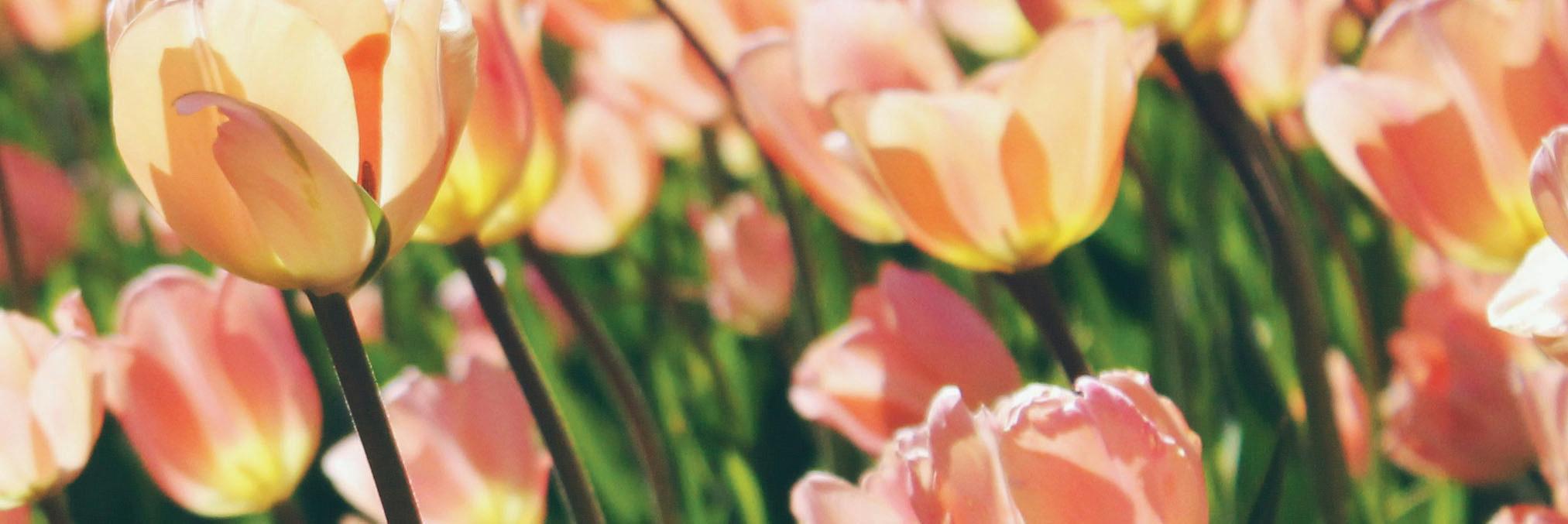
LETTER FROM THE DESIGNER
As we unveil the eleventh edition of Her Campus at American University’s Collegiette, I am filled with a profound sense of gratitude and excitement. This issue is not just a culmination of design and editorial efforts; it’s a testament to the spirit of innovation and inclusivity that defines Collegiette.
To our incredible design and print teams: your creativity and dedication have brought this magazine to life in ways that exceed expectations every time.
As we embrace the transition to “Collegiette” in the coming fall, I am confident that our design content will continue to impress. Our visual identity will serve as an object of empowerment and inspiration for years to come.
To our departing seniors: your contributions to Collegiette have left a permanent mark on our organization. Your leadership, mentorship, and unwavering commitment have set the bar high for those who will follow in your footsteps. As you embark on new adventures, know that your legacy will continue to inspire us all. Wishing you nothing but the best in your future endeavors.
I would be remiss if I didn’t express my heartfelt gratitude to President Jordyn Habib and Editor-inChief Sana Mamtaney for their remarkable leadership.
Jordyn and Sana, your passions for storytelling and unwavering dedication to our organization have been the driving force behind our success. It has been an honor to collaborate with you both and witness your vision come to life.
Together, as members of the Collegiette family, let us continue to amplify the voices of women and gender nonconforming individuals, spark meaningful conversations, and inspire positive change within American University and the world.
Thank you to each and every member of the Collegiette team, past and present, for your tireless efforts and unwavering commitment. And to our readers, thank you for joining us on this incredible journey. Your support fuels our passion and drives us to push the boundaries of creativity and innovation.
Without further ado, I present to you the eleventh issue of Her Campus at American University’s Collegiette.
With gratitude and anticipation,
Sophie Carter Design Director
G
IN THIS ISSUE
1



HEARTS OF EMPOWERMENT: A ONE STOP SHOP NONPROFIT
3



WHY YOU SHOULD STRIVE FOR ACADEMIC EXCELLENCE RATHER THAN PERFECTIONISM AS A STUDENT

5


FASHION AS A FORM OF PROTEST IN RESPONSE TO UNIVERSITY CENSORSHIP



9
WASHINGTON’S NEW POLICE
CHIEF: PAMELA SMITH’S PLAN TO COMBAT RISING CRIME












11 SOUTH ASIAN AMERICANS TURN TO CONTROVERSIAL IV TREATMENT TO LIGHTEN SKIN 17 13 “SEASONAL DEPRESSION” OR SOMETHING MORE? REVAMPING THE UNIVERSITY DINING EXPERIENCE: UNVEILING “THE EATERY” 19 FROM CAMPUS TO CORPORATE: THE CLASS OF 2024’S JOB MARKET SEARCH









23 27 THE TROUBLED TEEN INDUSTRY: LEGAL KIDNAPPING DISGUISED AS TREATMENT BLOOD, SEX, AND BLOODY SEX: THE FILM INDUSTRY AND ITS SHIFT TO INCORPORATE PERIOD REALISM AND THE FEMALE GAZE 21
IMPACT OF SOCIAL MEDIA ON SEX
THE












35 31 LITERARY ESCAPES: NAVIGATING WASHINGTON DC’S BEST BOOKSTORES LIFE IN THE (BARBIE) DREAM HOUSE: A REFLECTIVE ESSAY ON THE AMERICAN DREAM AND BARBIE IN ALL HER FORMS 37 THE POWER OF FAN CULTURE: EXPLORING ITS PSYCHOLOGICAL AND CULTURAL IMPACT ON SOCIETY 39 THE DANGERS OF ANTIMICROBIAL RESISTANCE: ARE COLLEGE STUDENTS AWARE OF THE POTENIAL RISKS OF ANTIBIOTICS?
HEARTS OF EMPOWERMENT: A ONE STOP SHOP NONPROFIT
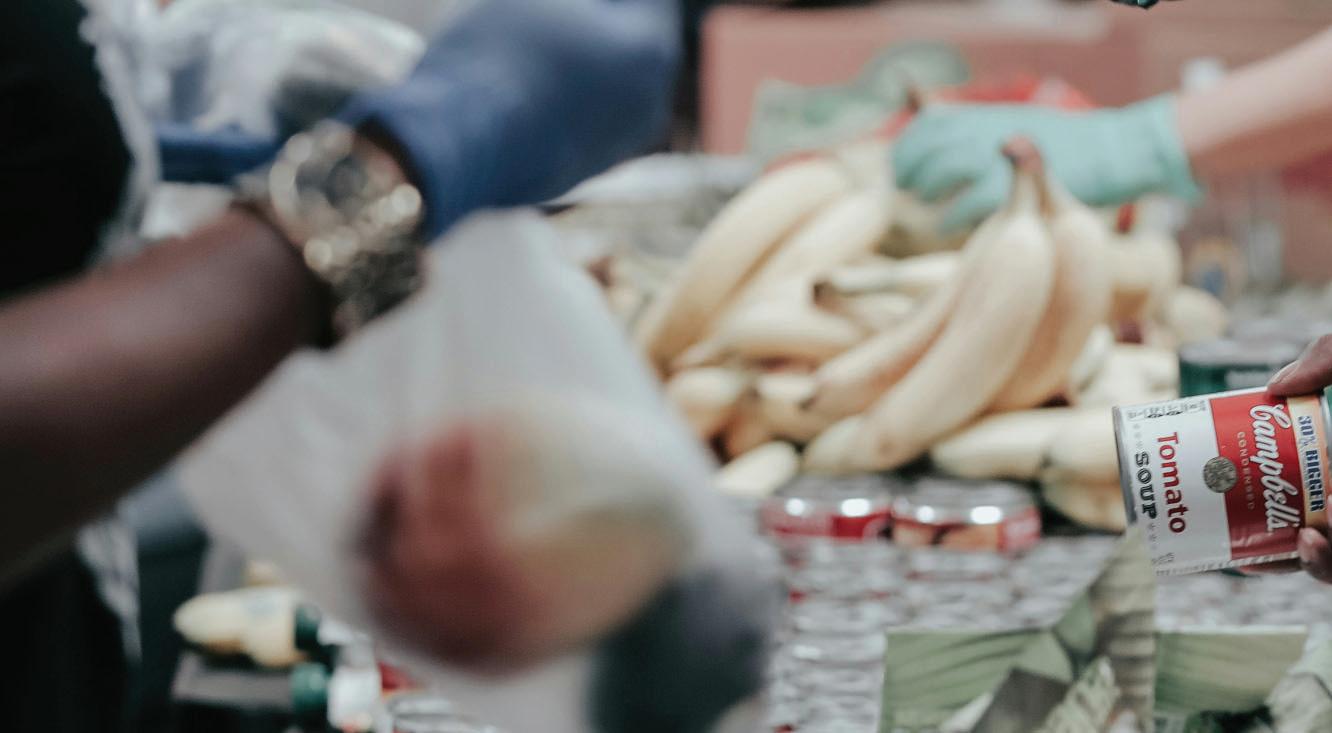
Hearts of Empowerment is a nonprofit organization striving to promote positive change in Washington, D.C., and two students have brought the organization to American University (AU).
Alexa Tabin, a Justice and Law student, began interning with Hearts of Empowerment in May 2023.
“Our main goal is that we aim to be a one stop shop nonprofit, and we strive to be the last nonprofit anyone will ever need,” Tabin said.
Melissa Sloan, a Public Health student, is another Hearts of Empowerment intern at American University.
Sloan was drawn to the organization’s commitment to leaving a long term change on communities in Washington, D.C. and the greater DMV area.
“We are a nonprofit in Washington, D.C. that aims to help children and families in under-resourced parts of Washington, D.C with a variety of opportunities like academic assistance programs and financial literacy programs,” Sloan said.
Hearts of Empowerment seeks to “equip communities with the necessary tools and resources to break the cycle of generational poverty,” and envisions a “world with equitable opportunities for all.”
“It is truly a group of people who are passionate about giving back to the community and giving people resources. Hearts of Empowerment is also about experiences and putting on experiences like Christmas gifting and gardening. Little fun things that children can miss out on,” Tabin said.

1 COLLEGIETTE |
Hannah Newlon-Trujillo
Photo by Joel Muniz
Photo by Markus Spiske

Hearts of Empowerment fosters connection. Through working for the nonprofit, Alexa and Melissa have grown their friendship through their dedication to philanthropy.
“Having Melissa on the team has been so much easier and a lot more collaborative, and has 100 percent grown our friendship,” Tabin said.
“I think we are both very passionate about Hearts of Empowerment and what it does, so when you are working with someone you are friends with and you are also working towards something you are so passionate about, it really grows your friendship,” Sloan said.
Sloan and Tabin have set up a variety of events at AU to inform students about Hearts of Empowerment and its mission, including fundraisers, ice cream socials and networking events.
“Our role as interns is to connect to the student body with Hearts of Empowerment through fundraising and connection,” Sloan said.
Last semester, the two interns facilitated an internship fair with Hearts of Empowerment at AU, where they connected students with a multitude of nonprofit internship opportunities.
Since its founding, Hearts of Empowerment has achieved
many notable milestones, such as winning the State Policy Network’s Ed-Prize, a feature in FOX 5 and being invited to the Forbes 30 Under 30 Summit.
“I like how invested everyone on the Hearts of Empowerment team is and with what they are doing.They all have other jobs, yet they are all putting in effort into the nonprofit and continuously helping to connect families and communities to the resources they need. Their dedication is inspiring,” Sloan said.
To learn more about Hearts of Empowerment, go to heartsofempowerment.org or @heartsofempowerment on Instagram.
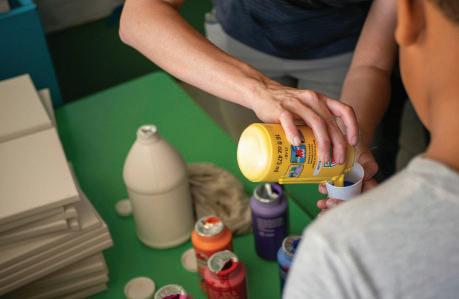
2 COLLEGIETTE |
Photo by Tyler Lagalo
OPINION:
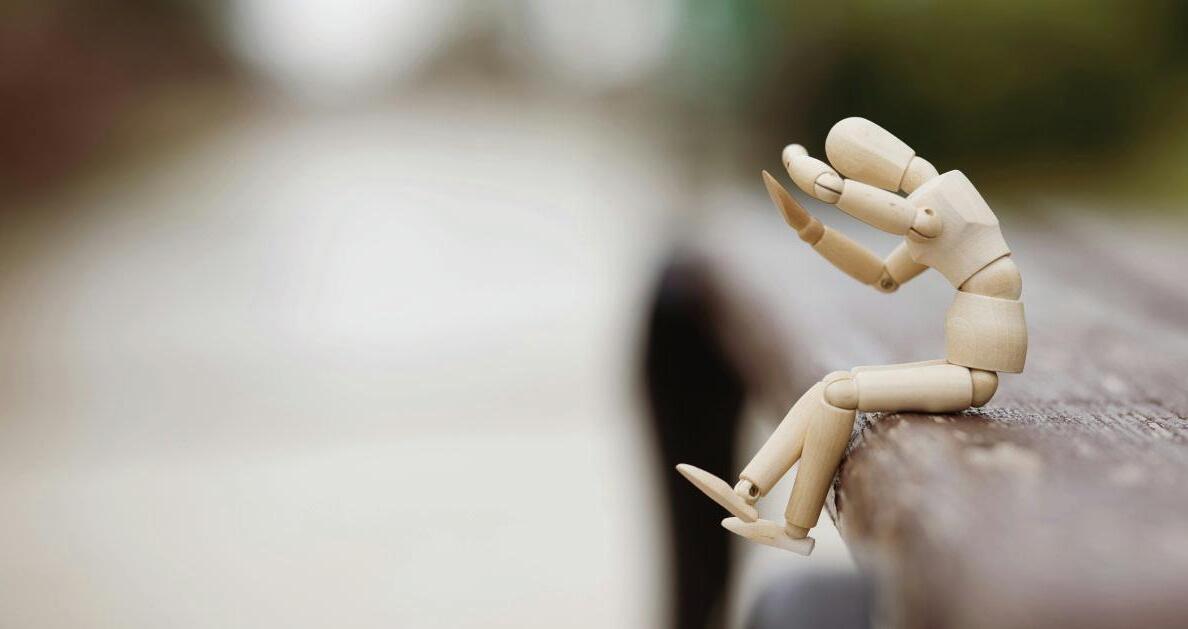
WHY YOU SHOULD STRIVE FOR ACADEMIC EXCELLENCE RATHER THAN PERFECTIONISM AS A STUDENT
Illustrations by Alyssa Guevara
Photo by Engin Akyurt
In our modern day culture the term “perfectionism” is used casually, but what does perfectionism really mean? Merriam Webster defines perfectionism as “a disposition to regard anything short of perfect unacceptable.” Many students are academically perfectionists. How is this destructive and unproductive to their mental wellbeing and overall success? What is a better way of thinking?
A perfectionist constantly sets unattainable goals that they can never realistically achieve. They leave absolutely no room for mistakes or pitfalls and they are focused on the outcome, rather than the journey.
Dr. Nabina Leibow, a senior professorial lecturer in philosophy and religion and the director of the College

Cate Geier
of Arts and Sciences Leadership and Ethical Development certification program (CAS LEAD), has encountered many perfectionist students. Leibow says perfectionism is so hard on students because, “the standard they are hoping to achieve is so high that they often can’t achieve it,” and consequentky “feel inadequate.”
Leibow explains that this way of thinking can affect students’ self worth and can lead to negative self esteem if they place academic achievement on their self worth. This negative self esteem trickles down and can negatively affect students’ relationships with others.
She says she sees a lot of her students “feeling like not morally good people” because they didn’t achieve the grade they wanted. Nate Siebert, a sophomore in the School of Public Affairs said when he receives a grade he is unhappy with, he feels “very very stressed and angry.” He is not alone, as many students end up feeling this way if they are perfectionists.
“I think I am a perfectionist because I want to be as successful as possible, in spite of anyone that would doubt me,” Siebert said.
Leibow speculates that this could stem from a combination of nature and nurture. A person may be a perfectionist because they were raised to strive for perfection and were rewarded for it. Perfectionism could also be part of someone’s temperament.
3 COLLEGIETTE |
Photo by Tim Gouw
Another factor that might apply specifically for college students is not knowing what the standards are after coming from high schools of different expectations. In high school it may have been easy to maintain a 4.0 GPA, but in college that goal may not be realistic and achievable. It can be difficult for some students to switch their mindset and their goals to adjust for their new setting.
Siebert himself admits that he has this issue.
“I maintain expectations for the same grades and keeping myself as involved and busy as possible,” he said. Students are susceptible to falling into toxic perfectionism because academics take up most of their time, causing them to derive a sense of self and worth from strong grades or other validation.
Perfectionism can be destructive in a student’s life. Leibow has seen students put so much pressure on themselves to do tasks perfectly that they never start assignments because of how daunting they may seem, or they work on an assignment so long until it is considered perfect that they turn it in late.
“It is all tied up in feelings of inadequacy and can get in the way of people caring for themselves, people loving themselves,” she said. This, ultimately, will not make a student feel adequate and successful.
Instead of striving for perfection it may be more conducive for most students to strive for excellence. Academic excellence could look like “meeting a high, achievable standard” and it “looks different in every context”, Leibow explains.
For example, a student who understands how to strive for excellence in an intramural soccer game would have goals like enjoying themself and being a team player. These goals would be different for a person playing in a collegiate level game, and a student who strives for excellence understands that.
A perfectionist, on the other hand, would not adjust their goals and would strive for the same level of success and intensity at an intramural level as they would at a collegiate level. If you understand how to set reasonable expectations and goals then you give yourself more space to succeed, if you only look for perfection, then more often than not you will end up losing.
So how can a perfectionist become someone who searches for excellence instead? Leibow explains that it is not
something that will happen overnight. Students must acknowledge their perfectionist tendencies and find strategies to curb these tendencies that work for them.
For example, it may be helpful for you to think about the things you say to yourself and think about if you would say them to someone else. “It is definitely possible to change our outlook, we just have to do some work to get there,” Leibow said.
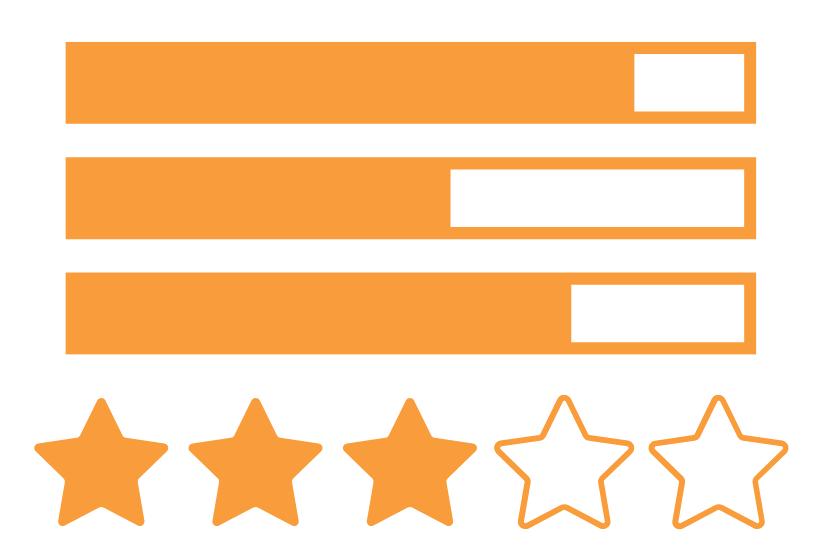





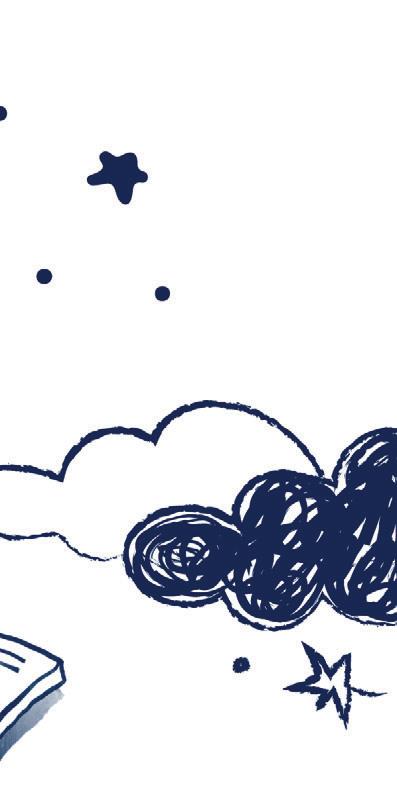
4 COLLEGIETTE |
OPINION:

FASHION AS A FORM OF PROTEST IN RESPONSE TO UNIVERSITY CENSORSHIP
If you walk around American University’s (AU) campus you will undoubtedly see multiple students sporting some sort of bold apparel item that holds political significance. Whether this is a potent campaign pin or Planned Parenthood tote bag, the trend represents the fiercely political nature of the university.
Beyond AU and college campuses, fashion has long been a form of expression and even protest throughout history. In the face of opposition, many turn to clothing to resist, specifically when other outward forms of resistance are restricted. “Fashion activism” is not a new concept, and although the phenomenon may not have been labeled as such, it has been a powerful protest force for centuries.
Fashion Activism
Fashion and apparel items have been staples for resistance movements, particularly in marginalized communities. During the Civil Rights movement, Black activists used clothing to assert the presence of a Black middle class.
However, the Black Panther Party utilized the tool in a different way. A study at New York University analyzed the party’s use of fashion as a resistance tool and stated their uniform of black leather jackets, sunglasses and berets was an important element for creating an “intentional image of edge.”
Fashion activism has certainly been present amongst
progressive resistance groups for decades. However, fashion activism is oftentimes not a choice. Clothing as a resistance symbol is sometimes the only option a group has at their disposal.
Clothing as Resistance for Palestine
This is especially true within the pro-Palestinian movement. With the increased scrutiny on pro-Palestinian protests in the United States and around the world, clothing has become a subtle act of protest.
The use of clothing as a sign of defiance is not a new phenomenon for the Palestinian cause. Most notably the keffiyeh, a traditional Palestinian scarf, has been worn by Palestinians and their supporters for decades. The scarf is now synonymous with the Palestinian liberation movement. However, the use of the keffiyeh was rooted in practicality and necessity.
The organization, Handmade Palestine, explained that the keffiyeh has been worn as a head covering for centuries. Then, during the British Mandate of Palestine, rebels began to wear the keffiyeh as a way to hide their identity and avoid arrest. The significance of the keffiyeh continued to rise as a symbol of resistance, specifically during the first and second Palestinian “uprisings,” or intifadas.
Al Jazeera cited the modern popularity of the keffiyeh to former Palestinian Liberation Organization (PLO) leader,
5 COLLEGIETTE |
Jordyn Habib
Photo by Ehimetalor Akhere
Yasser Arafat’s, choice to always add the scarf to his outfits.
Additionally, the Palestinian flag was banned in Gaza and the West Bank between 1967 and 1993. This censorship led to an increased need for more subtle symbols of Palestinian resistance, including the keffiyeh.
In recent months, the keffiyeh has taken new forms around the world as Israel’s attacks on Gaza continue. Even in traditionally exclusive spaces in the fashion world, the keffiyeh has become a prominent symbol. Vogue Scandinavia showed images of model and activist Alana Hadid wearing a keffiyeh for the majority of Copenhagen Fashion Week.
Jana Shakhashir, a journalist for Dubai based digital magazine Savoir Flair, wrote on her experience wearing a keffiyeh and other Palestinian symbols to Paris fashion week. Shakhashir exclaimed she found “unexpected allies at one of the fashion industry’s biggest spectacles.” Her choice in attire was one that felt obligatory to Shakhashir, as a way to maintain her Palestinian heritage. She cited that operating in the media field as a Palestinian is inherently difficult, especially when one juxtaposes the struggles of Palestinians to the luxury of the fashion world she encounters.
“It’s a constant negotiation between duty and identity; between the professional and the profoundly personal. We navigate spaces that seem worlds apart, carrying our identity and its inherent struggles with us,” Shakhashir wrote.
Resistance Through Clothing on College Campuses
Beyond the fashion industry, the keffiyeh can be seen on college campuses across the United States. The American University chapter of Students for Justice in Palestine (AU SJP) has called for supporters to wear their keffiyehs around campus several times in recent months in solidarity with the people of Palestine. This comes at a time when overt protests are being censored around the country and, specifically, at AU.
On Jan. 25, President Sylvia Burwell sent out a letter stating all protests inside of school buildings would be prohibited and advised that posters around campus “promote inclusion.”
On Feb. 16, AU SJP also publicized that President Burwell dismissed their concerns on these policies and stated that all actions by organizations must be “inclusionary” and relevant to their specific mission. This prohibits organizations from publicly showing support for the
Palestinian cause or other causes that do not directly pertain to their interest area.
In response, the non-profit organization, Palestine Legal, stated that “AU’s failure to address the harassment and targeting of students, as well as AU’s own actions to date are fostering a hostile campus environment of anti-Palestinian discrimination.”
Nonetheless, many have found that now is the best time to show solidarity on campus despite the seemingly endless limitations.
“Wearing the keffiyeh is an act of resistance on campus specifically to show the AU admin that they can’t bully Palestinians and their allies into ignoring the genocide Israel is carrying out,” AU senior Phoebe Holman stated.
Holman ultimately finds themself wearing the keffiyeh as a symbol of visible solidarity -- one that they feel they are afforded to choose because of their privilege as a nonPalestinian.
“Clothing is really the baseline for what allies should be doing to support the cause of Palestinian liberation,” Holman said.
Impact of Resistance
Resistance in the form of clothing has long been an accessible tool for marginalized groups to protest their oppression. As movements have grown, allies have adopted these symbols as a show of solidarity. However, privilege can limit the impact of their choice.
The choice to wear a keffiyeh comes with drastically different consequences for a non-Palestinian than it does for a Palestinian, whose heritage and entire identity is intrinsically linked to this resistance.
The cost of this resistance was shown in November when three Palestinian-American students at Brown University were shot while wearing their keffiyehs in Vermont. The attack on Hisham Awartani, Kinnan Abdalhamid and Tahseen Ali Ahmad is one example of the violence Palestinian-Americans have faced solely because of their identity.
The act of resistance through clothing is incredibly important for the Palestinian liberation movement, and is especially necessary from allies who have the privilege to choose how visible their solidarity is.
6 COLLEGIETTE |



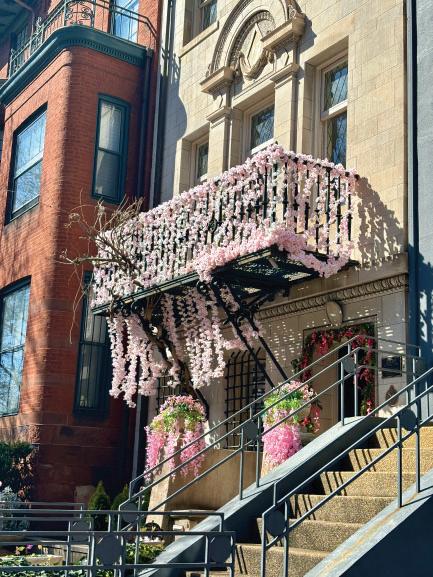
7 COLLEGIETTE |
Photos by Daisy Bateman
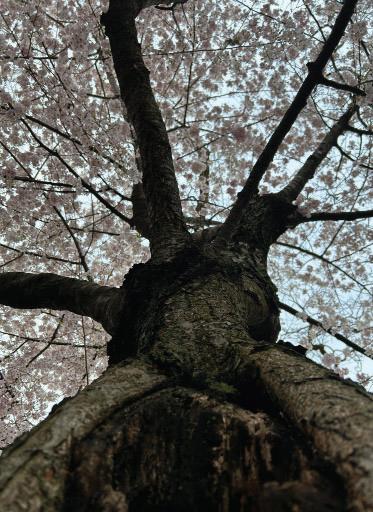

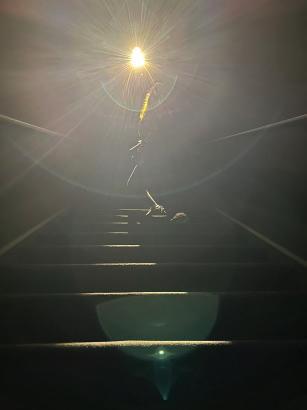
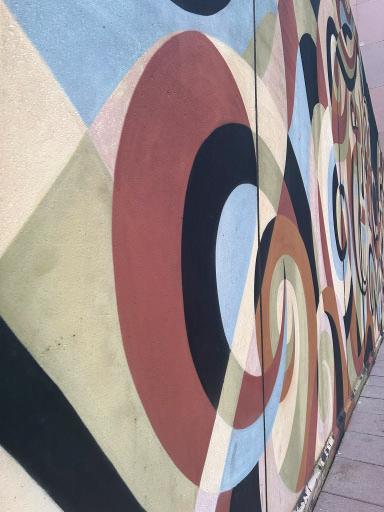
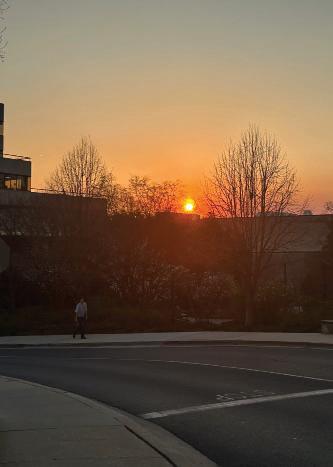

8 COLLEGIETTE |
Photos by Sophie Carter
WASHINGTON’S NEW POLICE
CHIEF: PAMELA SMITH’S PLAN TO COMBAT RISING CRIME
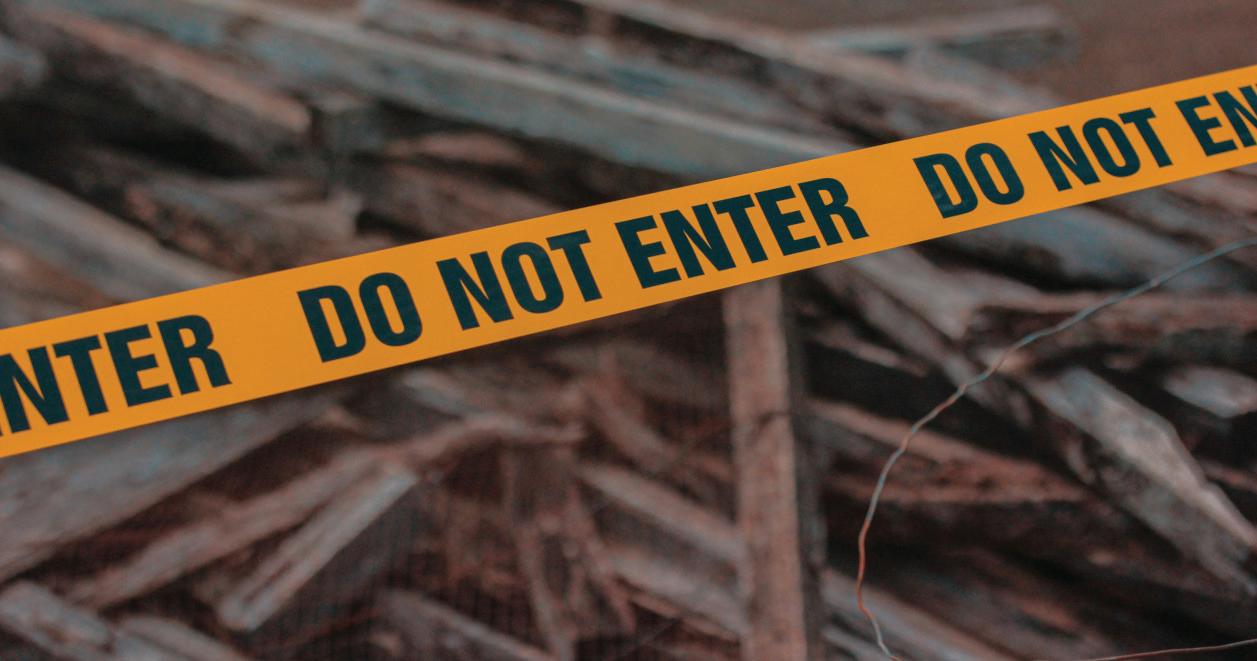
In November, the D.C. Council unanimously confirmed Interim Police Chief Pamela Smith to permanently lead the Metropolitan Police Department (MPD) in the midst of a crime crisis.
Violent crime in Washington, D.C. has increased by 40% from 2022, including a 33% increase in homicides. Robberies have also gone up and carjackings have almost doubled, but Smith has revealed a plan to combat increasing crime.
Smith has over 25 years of law enforcement experience with the United States Park Police, where she rose through the ranks and became the organization’s Chief of Police in 2021.
Some community members doubt Smith’s ability to reduce crime due to her background outside of the MPD.
“When crime is at a 20-year high, [Mayor Bowser] chooses a park ranger when we need a marine general at war,” said Ward 6 resident Brian Mulholland. “And [crime] hasn’t decreased one bit since Pamela Smith has become chief.”
At her confirmation roundtable, Smith unveiled an updated strategic plan for the MPD to decrease crime and increase feelings of safety.
This plan includes a violent crime suppression initiative, a robbery suppression initiative to combat increases in robberies and carjackings and a traffic safety compliance checkpoint program.
Smith says she also plans to introduce people-based strategies, including increased gun violence investigations, a community-focused patrol unit, a robbery suppression unit, a juvenile curfew and a school safety and engagement division.
Smith’s plan relies on a whole-of-government approach to address violence and crime, which has been praised by Councilmembers Christina Henderson and Brooke Pinto. By working alongside other District agencies such as the Department of Behavioral Health and the Department of Education, Smith aims to uncover and address the underlying causes of crime.

9 COLLEGIETTE |
Maryjane Williams
Photo by Mae Dulay
Photo by Jo Van de Kerkhove
“Chief Smith is able to solidify cross-agency relationships and improve community policing to meet the needs of all affected residents,” Henderson said. “I trust that she will because lives are very much at stake.”
Many council members have praised Smith’s active engagement in communities throughout the District. The chief has spoken at various local churches, community meetings, youth lunches and conducts weekly community walks to engage with residents.
Many residents are confident that Smith’s community engagement will help reduce crime.
Rahman Branch, a Ward 8 resident and former head of the mayor’s office for African-American affairs, said D.C. communities often feel unheard and marginalized. He stressed the importance of Smith’s community-focused approach to address people’s needs and tackle crime.
“We must acknowledge that crime prevention is multifaceted and requires addressing root causes collaboratively with the community, and the shift can only come with the change in leadership,” Branch said in support of Smith’s appointment.
Smith also wants to foster increased community engagement and accessibility throughout the department to increase community trust and cooperation with the police. She plans to have more officers patrolling on foot to promote feelings of safety and deter crime, which has been requested by many community members.
“It’s time cops here were more visible and connected with the community they’re supposed to protect and serve,” says resident Charles Stanchik.
Teenage gun violence has also been a major issue in the District, resulting in the deaths of 15 children this year. Smith plans to work with at-risk youth and their families to reduce crime.
Smith will be launching Blue Table Talks, where she and other MPD senior staff will hold discussions with at-risk youth to gain their perspectives and point them in the right direction. She also plans to reinstate the Chief’s Youth Advisory Council to collaborate with the district’s young people.
Some residents worry that these proposed initiatives may not be effective in preventing youth crime.
“So the lawlessness will only continue, if not escalate, because the new police chief wants to coddle these kids,” said Washington resident Des Bridgeman. “Unfortunately this will lead to more 12-year-olds in the morgue because people are getting tired of being victimized.”
Smith continues to work with the District community and other agencies to find ways to address rising crime trends.
During a news conference, Smith urged the D.C. Council to pass The Addressing Crime Trends Now Act of 2023, a public safety package introduced by District of Columbia Mayor Muriel Bowser. The legislation increases police resources and addresses organized retail theft, robberies and drug markets with heightened penalties and restrictions.
The D.C. Council is confident in Smith’s leadership.
“Her leadership style gives our community hope,” said atlarge Councilmember Anita Bonds. “I believe she has the background and qualities that can repair the relationship between the police department and the community it serves.”
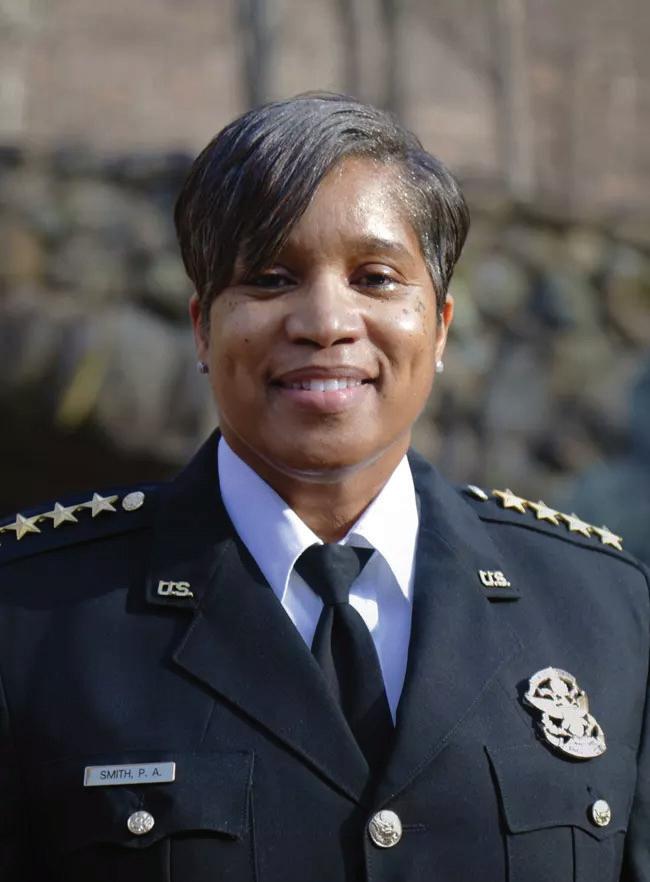
10 COLLEGIETTE |
Photo from National Park Service website
FROM CAMPUS TO CORPORATE: THE CLASS OF 2024’S JOB MARKET SEARCH
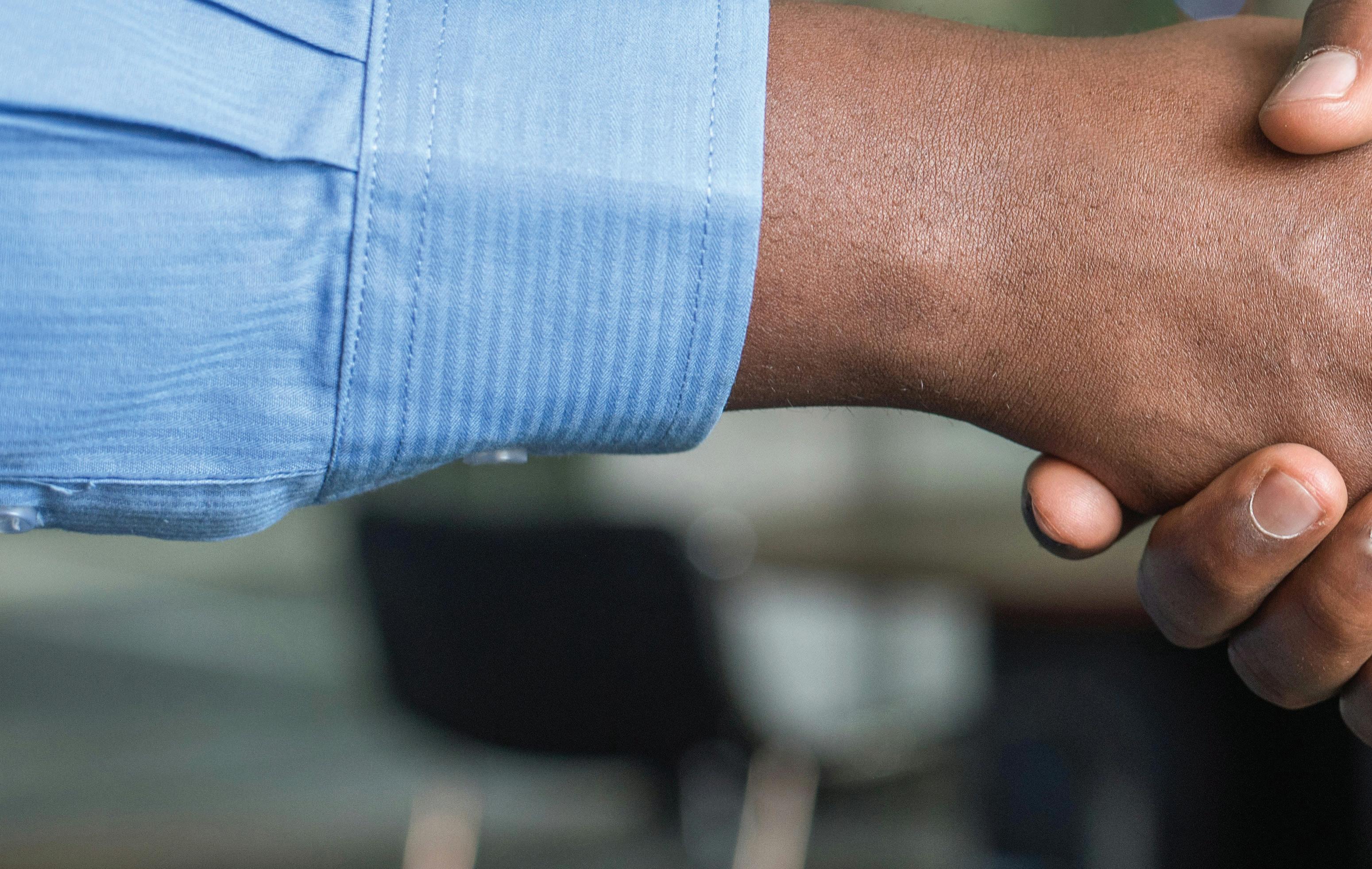
Four years ago, COVID-19 was declared a global health emergency, and thousands of people stopped working. While many companies were able to transition to remote work, unemployment still rose to 14.7%, according to US News. Over the past few years, the job market recovered and unemployment decreased significantly, but many job seekers report that it is harder to find a job now than it was in previous years.
Some of the changes impacting the job market since the pandemic are the devaluation of college degrees and a lack of recruiters. Companies are posting job openings without a college degree requirement more frequently than in previous years.
“Emerging technologies are growing fast, making a degree less valuable than hands-on experience and knowledge. We’re seeing workplaces transitioning to recognize skills in the same way they have traditionally understood degrees,”said James Neave, the head of data science at job firm Adzuna, in an interview with US News.
Additionally, according to CNBC, companies fear recession, and are therefore slowing down or altogether stopping their hiring process. This leads them to downsize their recruiting
teams, meaning there are not enough people to review candidate applications.
With all of this going on in the corporate world, many soonto-be college graduates are struggling to find employment. Noah Silverstein, an American University (AU) senior, expresses frustration with the time consuming and unrewarding process of applying for jobs right now.
“There are so many positions posted but you rarely hear back from them. You can apply to 20 jobs and only hear back from two and get only one interview. There is a large time commitment to applying for jobs,” Silverstein said.

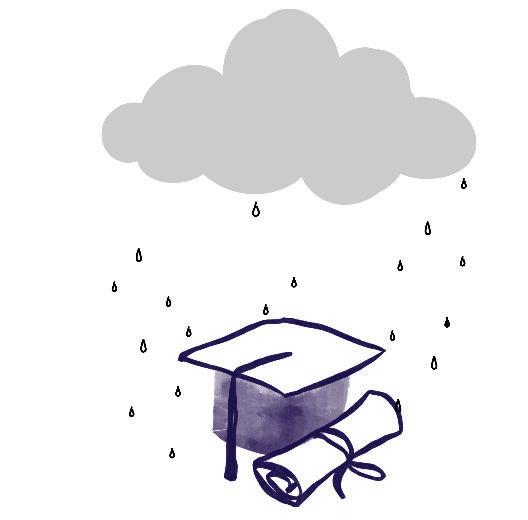


11 COLLEGIETTE |
Annabelle Evans
Illustrations by Alyssa Guevara
Photo by Cytonn Photography
OPINION: Si
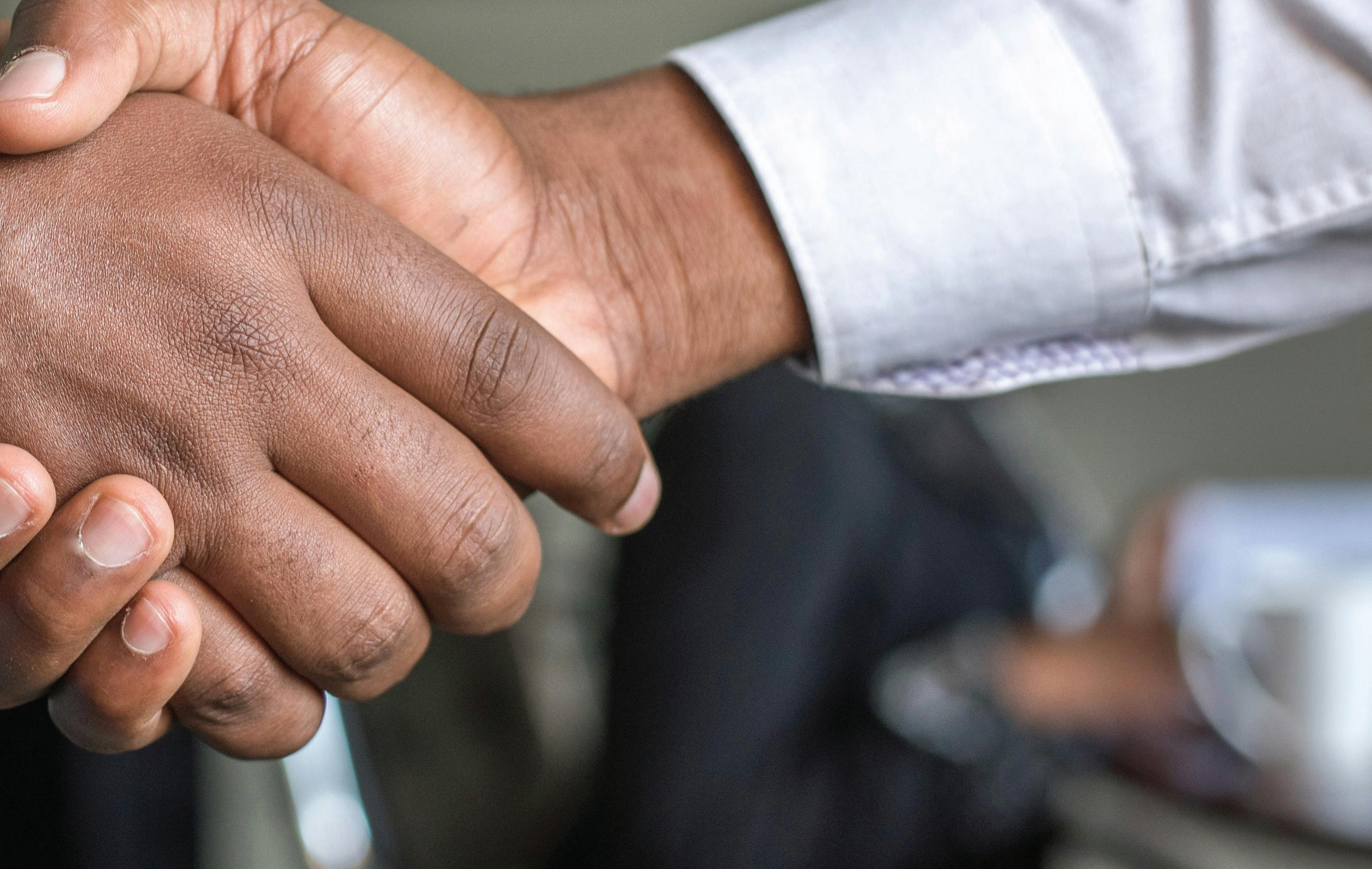
Another stressor that’s facing AU’s graduating class is readiness to enter the workforce for those able to find a job. Kiara Toscano, who is graduating from AU in May with her master’s degree, discussed her lack of confidence in choosing a career that she’ll love.
“I am not sure exactly what I am interested in and haven’t had enough work experience to figure it out,” she said. Learning about a field in the classroom can be helpful, but experience working in said field is the only way to truly know if it’s the right fit.
While anxiety over entering the workforce has occurred for decades, the added pressure of uncertainty in obtaining a job makes the process even more stressful.
“A college education was more valuable back then and people were saddled with less debt so they had more flexibility which allowed them to get a job they wanted,” Silverstein said frankly.
There are some benefits of the current state of the job market, like the normalcy of remote work and online job postings. When asked if she believes it’s more difficult to get jobs now than it used to be, Toscano asserted that the
market is very competitive, but much more accessible.
“Not only are job search tools way more accessible to us now than when my parents were looking, but the rise in telework has made more opportunities available to everyone,” Toscano said.
While things can seem pretty bleak for soon to be graduates, it is likely that more jobs will become available as the job market continues to recover from the aftermath of the COVID-19 pandemic.
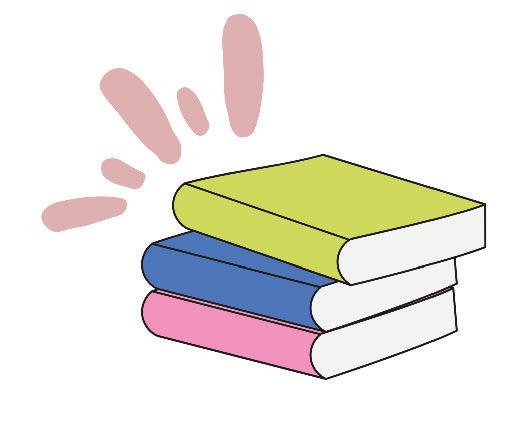

12 COLLEGIETTE |

SOUTH ASIAN AMERICANS TURN TO CONTROVERSIAL IV TREATMENT TO LIGHTEN SKIN
Sana Mamtaney
Photo by Samuel Ramos
A soon-to-be bride sits next to her mother in a spa, a somber line across her face while her mother beams with glee.
A nurse in a white canvas dress enters the consultation room, made up of glass walls, defeating the purpose of privacy. She pulls out an iPad, and opens the screen to reveal a profile photo of the bride.
“Wait until you see her at the wedding, the magic!” the nurse says while swiping her finger across the screen, toggling between before and after pictures of the woman.
“Her face is glowing, already!” her mother exclaims.
“You know in two weeks she’ll be a few shades brighter,” the nurse claims knowingly.
The scene is from Amazon Prime’s popular show “Made in Heaven.” The show featured a plot line of a bride who uses a glutathione IV treatment to be lighter for her wedding, at her own mother’s suggestion. The character breaks out in a rash due to a botched procedure.
The treatment has been practiced for years in Asia, but has only gained popularity in the United States in recent years, despite risks like rashes and health damages. The show is creating more buzz around the procedure, and raising questions of cultural acceptance and promotion, medical safety and bodily autonomy among the South Asian American community.
“The psychological motivations, risk factors, issues around colorism, and societal factors involving glutathione injections and skin lightening are very important to understand,” said Nancy Fitzgerald, a representative at the Skin of Color Society, an organization dedicated to attention in dermatology for people of color.
Glutathione infusions are also part of a growing medical spa industry. Last year, the number of medical spas in the U.S. grew to 8,841, up from 7,430 in 2021 and 5,431 in 2018, according to the American Medical Spa Association.
Glutathione is known by many dermatologists and practitioners as “the master antioxidant.” It has properties to improve health, immunity and prevent diseases, and the body produces it naturally. Many with conditions like chronic fatigue syndrome take glutathione supplements to improve their symptoms. IV infusions, which can deliver greater amounts of glutathione, are gaining popularity, but not just for health benefits.
Antioxidants including glutathione work by combatting free radicals, which are molecules that can damage cells. Cells already contain glutathione, so the antioxidant fights off disease and detoxifies chemicals. People with health conditions such as chronic fatigue syndrome, cancer and Parkinson’s may add more glutathione to the body through supplements or IV therapy to detoxify chemicals.
“It has been shown that high levels of glutathione shift melanin, that’s the thing that gives our skin color, from the darker eumelanin, that’s responsible for Brown and Black skin, to lighter pheomelanin,” said Dr. Gibran Sheikh, a Brooklyn-based dermatologist who is Pakistani himself. “It shifts that distribution and makes it more likely to form the lighter color.”
To achieve these high doses, clinics in Asia, including in countries like India and the Philippines, began offering IV infusions of glutathione for skin lightening in the early 2010s. More recently, clinics in the United States have been offering it as well. To achieve the desired effects of skin lightening, it must be ingested in the body frequently and in larger doses than what many supplements allow. For many immigrants to the United States, the practice is normalized in their home countries.
“I’ve had patients that go home to Bangladesh, or they go home to India and the Phillipines and get the treatments there and have asked me if there’s a place to continue it here,” Sheikh said.
In a survey of South Asian Americans, 31% of respondents used a skin-lightening product before. Parental pressure to use skin-lightening products was significantly associated with skin-lightening product usage.
Many of their favorite stars do it. A Long Island teacher, who requested anonymity, discovered glutathione by trying to find out how many Bollywood actors’ skin got lighter over the years. So, she started getting glutathione IV drips like them.
Even before glutathione IV came around, products like “Fair and Lovely,” a skin lightening cream, were endorsed and promoted by celebrities like Priyanka Chopra, who is now a well-known Indian actress and film producer in the U.S.
Chopra starred in advertisements promoting the product that streamed on television in the 1990s and 2000s. Chopra, or the latest big star spreads a luscious white cream over her face immaculately, not a single smidge of the substance outside a circular border. She moves over to the sink, water
14 COLLEGIETTE |
splashing across her face to reveal the change. And voila– all of a sudden, her skin is clear, lighter and a bright smile is plastered across her face. How could viewers not want the same thing?
Even before that, marital and professional prospects have been tied to skin color.
In “Made in Heaven” the bride’s mother asserts that, “She has to look good at the wedding…Serena’s the bride. She can’t be the darkest girl in the wedding pictures,” emphasizing the desperate desire for fairness.
“Our culture likes light skin, and unfortunately that kind of gets stuck in you even if you don’t want it to,” said the Long Island glutathione patient.
Western and colonial cultural expectations have emphasized that assertion in its treatment of races with darker skin tones. Many other African and Asian cultures, like Korea and the Philippines, hold similar expectations.
“The pressures of assimilation get to every single immigrant group in this country,” said Professor Suzanne Persard at American University, who teaches South Asian diaspora studies. “When you have a huge swath of South Asians who come from all types of backgrounds, ethnic backgrounds, caste backgrounds, class backgrounds, representation must increase.”
South Asian media and society constantly praises light skin. Companies like Garnier and L’Oreal which are sold at local pharmacies in the U.S., have products of their own for skin lightening, advertised and sold in South Asia.
“Skin lightening is an extremely large market in the Philippines and India and really all throughout Asia,” Sheikh said. “It’s a multi-billion dollar industry. There’s also folk remedies and oral remedies that are passed down through oral tradition from families and friends.”
A history of casteism in India perpetuates an idea that lighter skinned people are wealthy, intelligent and beautiful, while darker skinned counterparts belong at the bottom of society’s hierarchy The Netflix reality show “Indian Matchmaking” even featured contestants who openly had preferences for a light-skinned potential spouse.
“When you’re looking at a show like that and it’s seemingly innocuous, and Americans look at it like it’s just the culture, there’s a very pernicious way that the culture works in terms of matching caste,” Persard said.
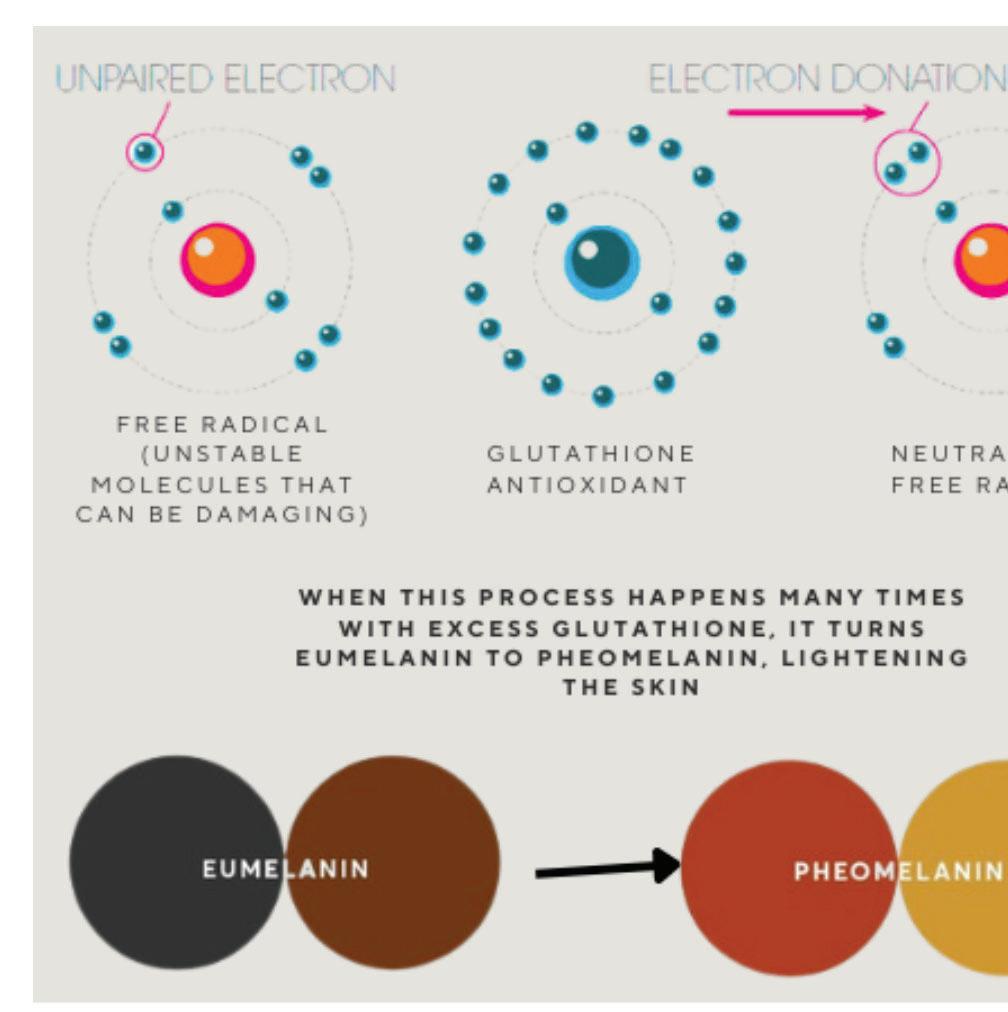

In the show, clients submit their biodata to a matchmaker, which is a compiled list of who they are and what they want in a partner. This includes their regional heritage, height, other physical characteristics and career details.
With a sigh, the Long Island glutathione user explained that “Even before I got married, you put in your biodata, ‘wheatish complexion,’ and everybody wants that fair skinned damsel,” she said. “Even if you don’t have the greatest of features and you’re fair-skinned, it’s considered beautiful somehow.”
The treatment may also be unsafe. The Food and Drug Administration (FDA) has warned against using injectables for skin lightening, noting negative health effects on the liver, kidneys, and nervous system.
Despite the health warnings, the practice is so deeply ingrained in culture that people believe the benefits of the practice far outweigh the risks. The Long Island patient recalls a powerfully motivating memory from her childhood in India. One day, at age 10, she walked into her home after playing outside in the sun.
She was greeted by her mother, who yelled “Look how dark you got!” in Gujarati, a language spoken in the Gujarat region of India.
Now, the grown up Long Island client said, “I have melasma which is a skin condition where you get these patches of dark spots on your body, on your face,” she said. “My goal is to lighten my skin two to three shades if possible. I’m not looking to be white, I’m just looking for a better and even skin tone.”
Sheikh treats many patients for hyperpigmentation, an unevenness in the skin tone that is caused by conditions
15 COLLEGIETTE |
like melasma. Many of his patients look to lighten their skin through different methods, in part to treat hyperpigmentation.
Some of the danger of this treatment comes from the unreliability of lab hygiene in clinics and from lab manufacturers. “It’s almost always going to be administered by someone who is not a physician, so the handling of the IV and the substance that’s going to be entered into your body and your metabolism is dangerous,” Sheikh said.
He added that the long term effects of intravenous glutathione injections are also unknown because it’s a “relatively new phenomenon,” Sheikh said.
While these warnings elicit cause for concern, Sheikh believes that the FDA may be over-reactive. “I think that if there’s even a whiff that it could be unsafe they issue these warnings.”
While some South Asian Americans disagree with taking the IV infusions, particularly young generations, they argue people should have a right to do so if they wish.
“The reality is that a large result of why they don’t feel comfortable in their skin is the expectation that is placed on them that I hope future generations can unlearn,” said Rowan Mohan, an Indian American student at the University of Maryland.
Among patients who are a little more reflective, “they feel ambivalent about it because they know a lot of it is trying to live up to this arbitrary standard of beauty that has been put onto them their whole life and almost propagandized to them from a young age,” Sheikh said.
Although he says many of his patients are nonchalant about treatments, others feel that “the implications of it are such


that you sort of have to play the game if you want to get ahead so they’re willing to participate.”
This may be even more true for South Asian Americans or immigrants. “Sometimes in a diaspora you feel even more of a need to be invested in an idea of cultural purity whereas probably in the subcontinent you may not be as inclined to follow certain traditions,” Persard said.
Others argue that the issue should be considered in the context of personal rights.
“I’m not saying that people that are darker aren’t beautiful… it’s a personal thing for me and I think it is a personal thing for everybody,” said the patient from Long Island. “I think it’s a right, it’s our bodies.”
Sheikh agrees. Although he advocates for remedying historical injustices, and has had his own experiences with colorism as a South Asian American, he believes people should have the right to information, and to choice.
“I have my opinions about colorism but I understand that people live in and occupy a world that they didn’t make,” he said. “My central thesis is that you should love your skin how it is but you should also be able to advocate to have your complexion look the way you want it to.”
Cultural values, as well as the principle of choice are trickling down to younger generations.
Generations later, like the Long Island patient, Mohan’s grandparents pleaded with her as a young girl to stay out of the sun. Wide-eyed and energetic, as she still is today, this didn’t stop her from being a kid, and doing what she loves.

Despite cultural expectations of lightness sustaining, young people are responding to it differently. Today, as a college student, Mohan defies what is ingrained in South Asian Americans, going on frequent hikes, camping trips and traveling. Much of what she loves to do happens to take place under the sun.
According to Mohan, that’s a choice she gets to make, something she believes is everyone’s right– including people who do pursue IV skin lightening.
Graphics by Sana Mamtaney
16 COLLEGIETTE |
“SEASONAL DEPRESSION” OR SOMETHING MORE?
The changing of the seasons brings new hopes for warmer weather, longer days and breaks from the normal routine. But is it always a good thing?
Not for people with Seasonal Affective Disorder (SAD). SAD, according to the National Institute of Health (NIH), is a “type of depression characterized by a recurrent seasonal pattern, with symptoms lasting about four to five months out of the year.”
Depression-like symptoms can occur in a person with SAD. These symptoms can include feelings of irritability, loss of interest in hobbies or activities and difficulty focusing.
According to the National Institute of Mental Health (NIMH), “In most cases, SAD symptoms start in the late fall or early winter and go away during the spring and summer, known as winter-pattern SAD or winter depression.”
There is another subsection of SAD that occurs in people in the summer months, rather than in winter, known as summer-pattern SAD.
“Seasonal depression” is the term a lot of people use to describe what they feel when the seasons are changing, mostly in relation to the winter months when there is less daylight and colder weather.
What Causes SAD?
Studies on individuals with SAD show reduced levels of the neurotransmitter, serotonin, which helps to regulate mood.
Both winter and summer pattern diagnosis studies indicate that melatonin, the hormone that affects the sleep cycle, is also affected.
Melatonin levels are much higher in winter-pattern SAD, which increases individuals’ likelihood of oversleeping. On the contrary, summer-pattern SAD worsens sleep quality, resulting in sleep disruptions.
A 2023 NIH study investigating the “associations between ambient temperatures and bad daily mood” concluded
17 COLLEGIETTE |
Sarah Metcalfe
Illustrations by Gracie Flach
Photo by Matthew Henry
OPINION:

that in people diagnosed with bipolar disorder and high neuroticism, the probability of having a bad day decreased the more sun there was. Bipolar disorder also increases the likelihood of being diagnosed with winter-pattern SAD.
The same study, however, showed that people diagnosed with anxiety, depression and/or schizophrenia have the opposite effect of those who have a worse day when it is less sunny. The hotter it is, the more likely they will have a bad day.
“According to our findings, rising temperatures may positively affect mood in the general population. However, individuals with certain psychiatric disorders, such as anxiety, depression and schizophrenia, may exhibit altered responses to heat, which may explain their increased morbidity when exposed to high temperatures,” the study stated.
Managing Symptoms
There are several ways to help an individual manage SAD. According to NIMH, they can be used alone or in combination with one another.
Since it acts like depression, antidepressants and different forms of therapy are options.
Light therapy is one of these forms to help people with winter-pattern SAD. It exposes the individual to the feeling
of the sun and Vitamin D they are missing in the winter.
According to NIMH, the process is that “the person sits in front of a very bright light box (10,000 lux) every day for about 30 45 minutes, usually first thing in the morning, from fall to spring. The light box, which is about 20 times brighter than ordinary indoor light, filters out the potentially damaging UV light, making this a safe treatment for most.”
The common disorder has many solutions, giving people hope for their lives to be less drastically affected by weather they cannot control.
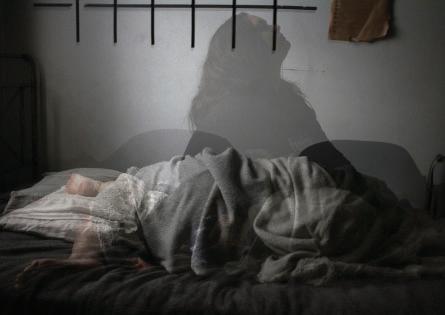
18 COLLEGIETTE |
Photo by Megan Te Boekhorst
OPINION:

REVAMPING THE UNIVERSITY DINING EXPERIENCE: UNVEILING “THE EATERY”
In the heart of a blooming university campus, students gather and migrate towards the Terrace Dining Room (TDR) to refuel both body and mind. However, a tangible sense of discontent hangs heavy in the air.
It’s not just the grumbling stomachs or the clamor for an open seat — it’s the upheaval amidst change that’s stirring restlessness among the student body.
Picture this: you enter the familiar confines of the university dining hall, eager for a moment of relaxation away from class or in the company of friends, only to find half the seating walled off, wrapped in the noise of ongoing renovations.
It’s a scene emblematic of the tumultuous times we find ourselves in — a convergence of multiple transitions set against a backdrop of ongoing changes.

As American University grapples with the president’s departure, navigates through financial strains and contends with unwanted changes to meal plans, the decision to restructure the dining hall seems symbolic of vast shifts within the university.
Yet, amidst the racket of renovation machinery and the swirling rumors of dissent, questions exist in the minds of many. Doubts regarding the timeline and outcome of these renovations are increased by a sense of skepticism fueled by seemingly unneeded and performative changes.
Amid this atmosphere, the dining hall — soon to be renamed “The Eatery” — stands as both a potential asset and a point of concern.
It’s here, among the clatter of construction, that students and staff alike want clarity, explanation and a glimpse of the groundedness that lies beyond American University’s constant shifting.
As the Terrace Dining Hall undergoes its much-anticipated renovation, students are left with excitement and skepticism. The initial phase, which commenced in December, promises a revamped kitchen space, better food and improved views of kitchen operations.
However, as a portion of the seating area closes behind the rotisserie station, some students can’t help but wonder if the sacrifices in seating will truly pay off. While the university
19 COLLEGIETTE |
Sophie Carter
Photo by The 9th Coworking
Photo from www.aukitchentdr.com/
assures students and staff that the construction and lack of seating won’t inhibit people’s experience in the space, many people already feel the annoyance of the crowded space.
Based on the mockup designs and scenes released by the university, The Eatery will have both a sleek and retro feel to it. Large open spaces, black hardware and geometric designs appear throughout the mockups. While the mockups can change at any time, the overall feel of the space will most likely remain within this style.
Other than the cosmetic enhancements to the dining hall, two big features will change the experience: automated card entry and a second entrance. Anyone who has set foot in TDR knows that the people who swipe students in are the first part of the dining experience.
Whether students nod their thanks or talk to them for a while, they are an essential part of TDR. If automated card swiping is going to be the new norm, will these workers be laid off? Will The Eatery have a colder atmosphere?
While questions swirl about that development, the second entrance is a more positive element to the redesign. Currently, the singular entrance causes a funnel effect.
The line of students waiting to be swiped in often winds up and around the staircase until it nearly reaches the doors of the first floor. With a second entrance, the flow of people will hopefully be more controlled, and students will be able to get in and out with ease.
As anticipation builds for the second phase of renovations, set to begin in early to mid-April, doubts surface regarding
the university’s ability to adhere to the proposed timeline. With the dining hall set to be completely closed, questions arise about the reality of completing such a significant renovation in time for the fall 2024 semester.
The university plans to use a space on the first floor of the Mary Graydon Center to accommodate students during the second phase. This is in addition to plans for temporary dining setups in temperature-controlled tents. Many students are wary of this seemingly half-baked proposal.
“I don’t know how that is going to work. The TDR workers already do a lot, and now they’ll have to lug heavy containers of food and stand outside,” said sophomore and School of International Service (SIS) student Grace Bryon.
Furthermore, concerns linger about the university’s commitment to accommodating students’ diverse dietary needs throughout the renovation process. While promises have been made regarding allergens, religious dietary restrictions and takeaway meals, students wonder if these promises will hold when put to the test.
Amidst these uncertainties, the university strives to keep the campus community informed with regular updates on its website. However, for some students, these updates may serve as a reminder of the lingering doubts surrounding the renovation project.
As the project progresses, only time will tell whether the university can deliver on its promises and usher in the envisioned future of culinary excellence on campus, or if doubts will persist.
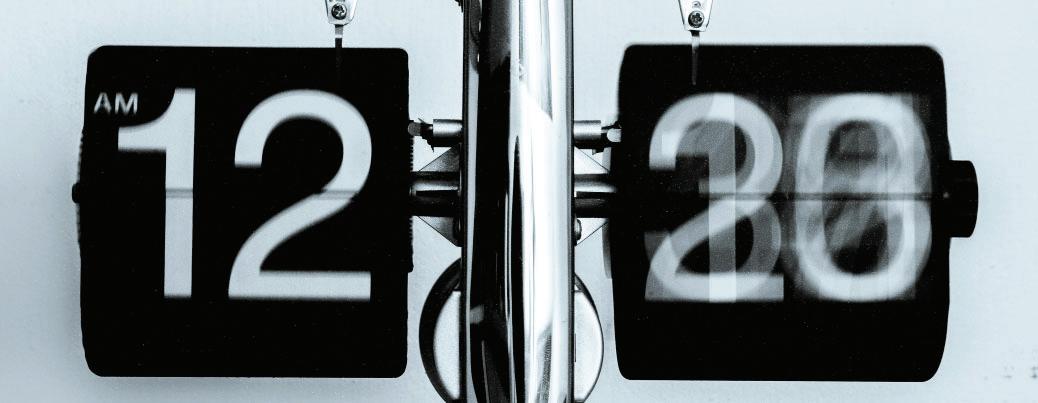
20 COLLEGIETTE |
Photo by Djim Loic
OPINION:
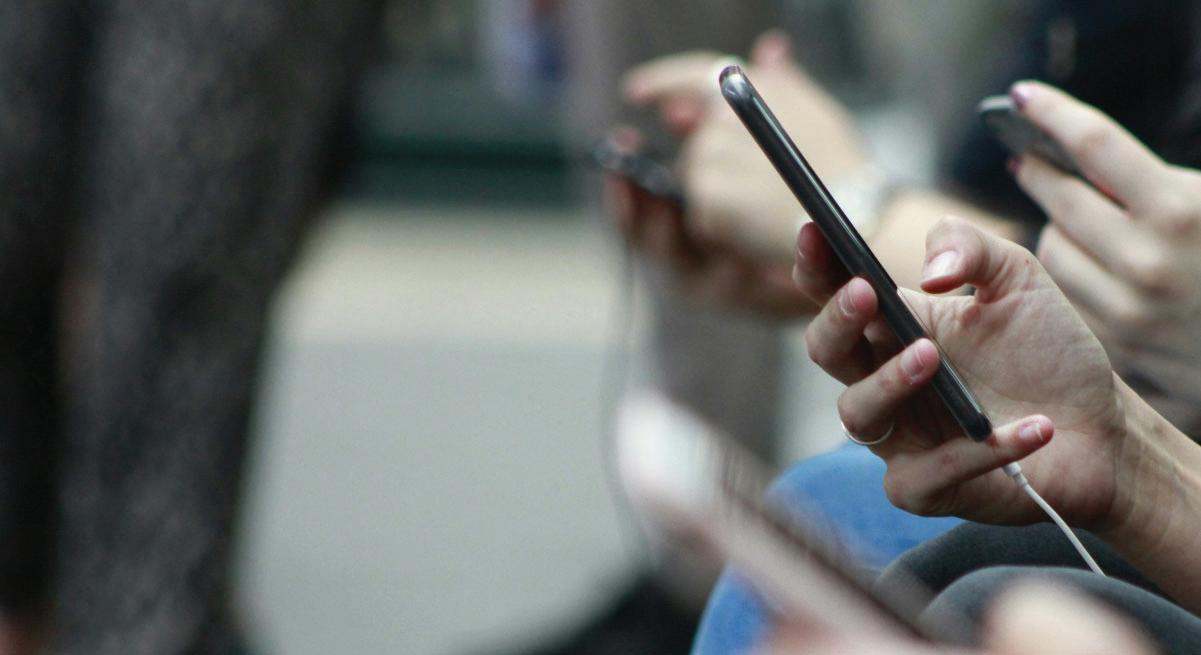
THE IMPACT OF SOCIAL MEDIA ON SEX
Social media usage is on the rise globally. People turn to social media for various reasons, including entertainment, to feel connected to others and to seek information.
One such area of information is sex. A report conducted by UNESCO revealed that 29% of young people find information about sex from digital sources, only surpassed in popularity by friends as a source.
Adolescents and young adults often use digital platforms to learn about sex in order to avoid stigma, rejection and embarrassment that may come from discussing it with parents or healthcare professionals.
For many adolescents, sex education is foreign.
“When we are looking at the population in the U.S., most young people don’t have access to sexual education through their schools, most people don’t have comprehensive conversations with their parents at home unfortunately,” said Danielle Bezalel, a sexual education expert and creator of the feminist podcast “Sex Ed with DB.”
Digital-based information is easy to access because it provides a variety of content, and it can be accessed easily in different formats, such as videos and short posts. On the contrary, there is an impersonal nature of viewing information through a screen without having to face others.
Social media has an impact on the way people consume
information and shaping perceptions. Information found on the internet can be misleading, unfactual and can fail to communicate complexity, especially regarding topics such as consent.
“We can say yes means yes over and over but what if one person has had one drink,” Bezalel said. “I think the more nuanced we can get with the information we can share on that topic, the better.”
The causal relation of social media and physical effects such as sexual dysfunction are currently being explored. A Portugal based study, entitled “Sexual Function and Problematic Use of Smartphones and Social Networking Sites,” explained some of the consequences of the addictive use of smartphones on sex.
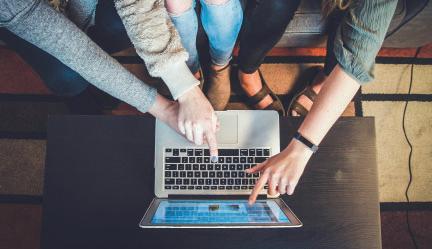
21 COLLEGIETTE |
Ela Hernández
Photo by Robin Worrall
Photo by John Schnobrich
Phone addiction might threaten sexual functioning by increasing stress and compromising mental health. Participants in the study reported their life satisfaction levels declined after two weeks of increased digital use.
Mixed emotions between anxiety and diminished life satisfaction interfered with participants’ sex lives. Women who reported most social media use had an increased risk of arousal issues, poor vaginal self-lubrication, sexual dissatisfaction and general distress. Men reported they faced a greater risk of low desire, erectile dysfunction and sexual dissatisfaction.
Porn can also affect perceptions of reality as it becomes a source where people seek factual information. A Boise University study researched the online activity of students and revealed that 24% of women and 72% of male students used pornography to obtain sexual information.
Another study entitled “The Dark Side of the Internet Regarding Sexual Education” reported that 76.5% of American youth have viewed pornographic content. Often what is depicted by mainstream porn sites caters to heteronormative standards by centering men’s pleasure and showcasing conventionally attractive bodies.
“Porn impacts what we view as normative in terms of body, shape, size, skin color, ability. I think there are all these things we are receiving in terms of messages when we watch porn. Typically these porn sites aren’t offering a critical eye,” Bezalel said.
Content watched can also largely influence beliefs on sex and what it should be like.
“Porn has a huge impact on the way in which people view what is appropiate during sex, they are kind of fed videos that are very popular which might make them more interested in those sexual acts in their lives,” Bezalel said.
Nonetheless, paradigms are changing with the role of recent generations working on inclusion and creating more diverse information. This includes sex education regarding the LGBTQ+ community, people of color and women. Shifts have also come with the creation of ethical porn sites, also known as feminist porn, which includes a range of body types that center around the non-male and nonheternormative pleasure.
“I think this idea of only seeing porn from the male gaze is shifting even on mainstream porn sites. While some porn absolutely centers the male if we are talking about a

cisheterosexual couple, there are totally many popular porn videos that center women’s pleasure,” Bezalel said. “Again, what do those women look like? They are typically white, typically thin. There is more work to do when it comes to making sure that different people are displayed in these videos, but I do think having women show their experience with pleasure is more common now.”
Taking into consideration the risks of sex information online, the question arises of what to do with these risks. How can information be better regulated so that there is scrutiny on what is depicted and how? Many argue that completely removing topics of sex on the internet sends a shameful, wrong message.
“Banning sex from generic social media impoverishes the diversity and quality of sexual information to be found online. It also sends a message that sex is not a normal part of life, creating shame and stigma,” said Katrin Tiidenberg, a social media and visual culture professor at Tallinn University, Estonia.
There are other options towards overseeing the information displayed. A strategy that many advocate for is a team dedicated to fact-checking the information published in their platforms.
“It would be on the part of the team that work at these social media companies to implement essentially a strategy where they would be able to fact-check this information and that team would be made up of sex educators and people who are trained in knowing what is appropriate,” Bezalel said.
Solutions to remedy this issue are vast, but require practicality and nuance.
You can find more about Danielle Bezalel on her podcast “Sex Ed with DB” and her Instagram @sexedwithdbpodcast
22 COLLEGIETTE |
Photo by Etienne Boulanger
THE TROUBLED TEEN INDUSTRY: LEGAL KIDNAPPING DISGUISED AS TREATMENT
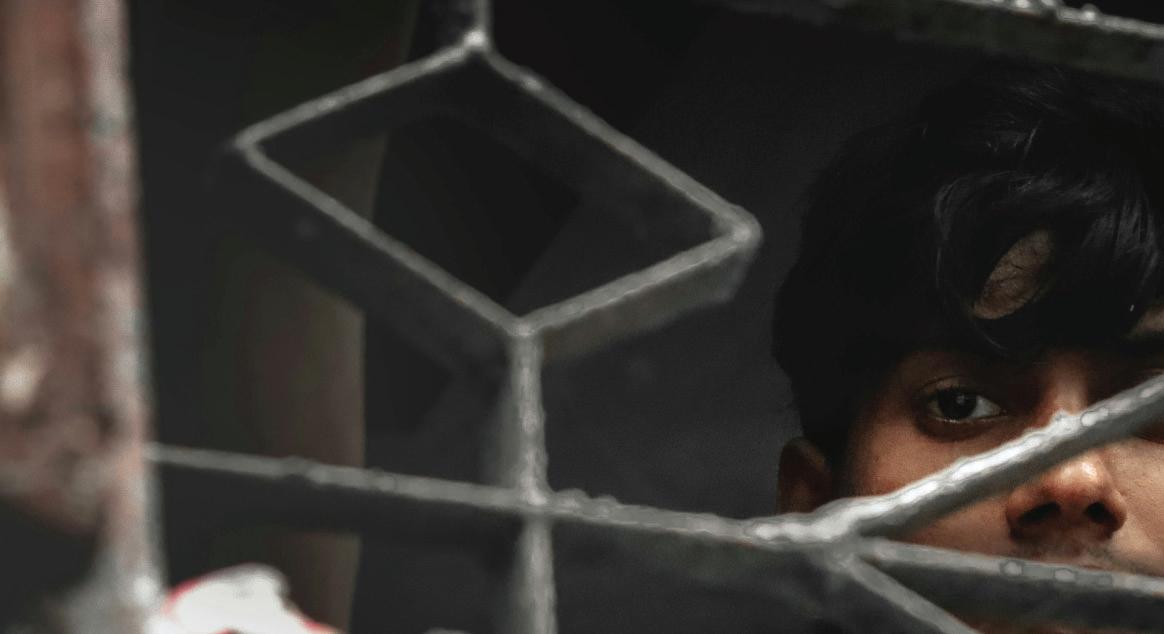
At 3 a.m., teenagers are woken up to strangers in their bedrooms. Then, they’re driven hours away, often to the midwest. What awaits them is abuse, physical labor, poor conditions, psychological manipulation and sadness– all paid for by their parents.
This is the story of many children in the troubled teen industry. The troubled teen industry is a name coined by survivors for the system of underregulated residential youth treatment facilities. Many parents send their children to these programs for drug and alcohol use, mental health, eating disorders, disabilities, conversion therapy and more.
One such facility is chronicled in a Netflix docuseries released on March 5, “The Program: Cons, Cults, and Kidnapping,” directed by and starring survivor Katherine Kubler. Kubler was sent to the Academy at Ivy Ridge, described as a behavioral modification program, when she was 15 after getting caught drinking a Mike’s Hard Lemonade, resulting in expulsion from her high school.
These programs promise to rehabilitate teenagers from their troubles. Instead, the facilities pocket most of the payment, and force the children to endure physical labor and verbal, physical, emotional and sexual abuse.
It is estimated that between 120,000 to 200,000 young people reside in some type of group home, residential treatment center, boot camp or correctional facility, according to the American Bar Association. At least 50,000
of these children are placed there by their parents, and stay there for a year or more.
In the docuseries, Kubler tours through the now-abandoned facility with other survivors, sharing their stories in the rooms where abuse occurred.
Using humor, narration and raw emotion, Kubler takes viewers on a personal journey of recollection and reconciliation, as well as exposes the horrors of the academy and other similar programs.
Much of “The Program” focuses on the notion that parents are led to believe their children are really being helped through recreational, rehabilitation-focused activities. With monitored phone calls and visits, and the threat of having to be in the program longer if they explained to their families what they endured, most children do not have the opportunity to tell their parents what is truly going on, or are too afraid to.
These programs also lead parents to believe that their children are master manipulators, and are manipulating them to come home because they don’t want to become better, leading many to trust the facilities rather than their own kids.
Despite this abuse, the industry receives an estimated $23 billion dollars of annual public funds, according to Breaking Code Silence. Yet, most of these facilities are not regulated
23 COLLEGIETTE |
Sana Mamtaney
Photo by Ehteshamul Baque
OPINION:
by the government. They receive even more money from parents who send their kids to these facilities.
A report from the U.S. Government Accountability Office “identified thousands of allegations of abuse, some of which resulted in death, at residential programs across the country and in American-owned and American operated facilities abroad.”
In the past few years, survivors of this industry took their stories to social media, especially TikTok. There are thousands of stories under the hashtags #BreakingCodeSilence and #ISeeYouSurvivor. These stories range from those of wilderness therapy, where children are forced to hike for miles and live in the wild with a lack of basic hygiene and food, to stories of sexual abuse.
Paris Hilton is the most famous of these survivors. The reality star turned DJ became a face of the movement against the troubled teen industry, opening up about her parents sending her to a therapeutic boarding school in Utah in the 1990s.
In an opinion piece for the Guardian, Hilton discussed being sent to “obs,” short for observation.
“It was solitary confinement in a tiny cinderblock room with nothing but a drain and a roll of toilet paper. The room was freezing cold, and I was almost naked. I paced until I couldn’t stand up anymore. Then I huddled on the floor and rocked back and forth, forcing myself to think about the life I would create for myself after I got out,” she wrote.
Hilton also discussed being sexually, physically and mentally abused.
Tik Toker Dasogoloff, known as Dasha, stated that as a 14- year-old in a facility, she was frequently dragged by staff members from one building to another, leaving bruises on her arms. She was forced “to sit and listen to my peers and staff berate me for incredibly insignificant things, and would often get called vile names for doing something such as rolling my eyes or daring to point out how screwed-up their treatment of residents is.”
Now, the release of “The Program,” is giving survivors a chance to have their story told in the mainstream. The series accumulated 22.7 million viewing hours between its March 5 premiere and March 10, numbers that drew attraction and attention.
“I want to give her the biggest hug,” one Reddit user said
about Kubler. “My parents watched the first episode last night and my mom’s reaction was so validating: ‘What is wrong with those people? You didn’t deserve that. I’m so sorry.’ I cried for like 2 hours but it was a good, cathartic cry. Katherine is my hero.”
Thousands of comments, Tweets and TikTok videos express similar sentiments. Survivors are having their stories told, with the opportunity to share it with their families and gain a sense of closure and retribution.
Grown up survivors are using the internet, film and social media to their advantage to bring awareness to these unaccountable facilities. While the industry takes profits, parents and children lose money and their humanity. Awareness, through storytelling, can change all of that.
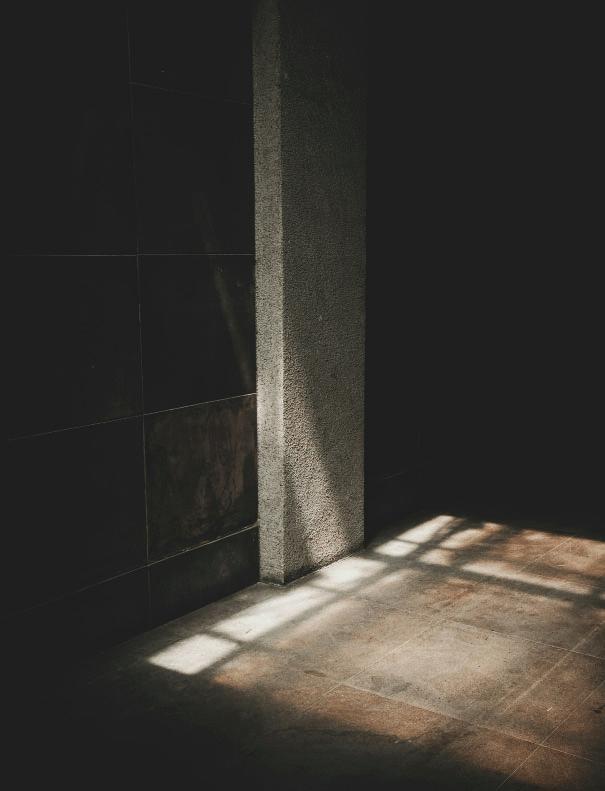
24 COLLEGIETTE |
Photo by Henry Co




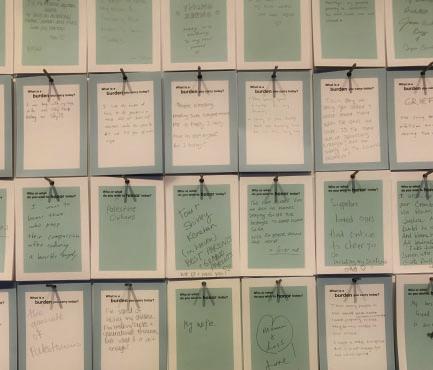
25 COLLEGIETTE |




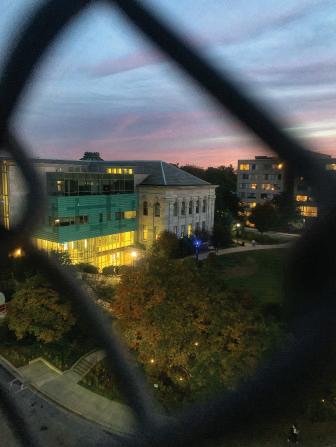
26 COLLEGIETTE |
All photos by Daisy Bateman
OPINION:

BLOOD, SEX, AND BLOODY SEX: THE FILM INDUSTRY AND ITS SHIFT TO INCORPORATE PERIOD REALISM AND THE FEMALE GAZE
Samantha Jaffe
Photo by Denise Jans
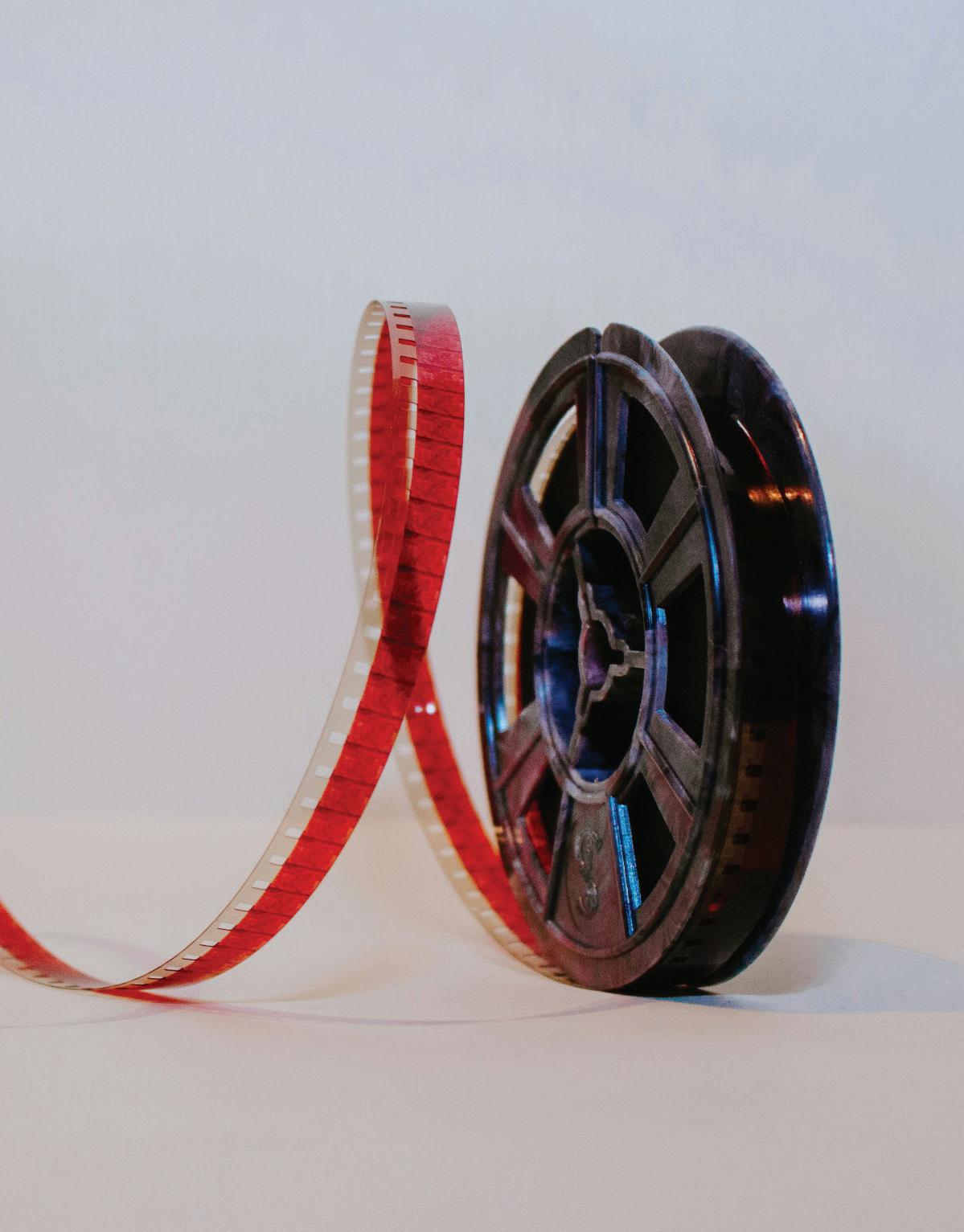
Think back to the last time you saw blood on-screen.
Was it a wound? A nosebleed? Probably.
Now try to recall when you last saw menstrual blood onscreen. Did that take a little longer? Given that 26% of the global population is bleeding on any given day, you’d think it’d get a little more screen time.
So where’s our monthly bloody friend in our favorite films and shows? Despite being a very real part of people’s lives, menstruation is hidden within popular culture. Society teaches from a young age that menstruation is shameful, telling young girls that as soon as they come into womanhood they must hide one of the most natural functions of their bodies.
The socialized critique of periods has led to the development of a secrecy imperative — periods are taboo; they’re “dirty,” “gross,” and “embarrassing.” When we do see them on-screen, they’re either euphemized or vilified, depicted as the cause for a massive meltdown or blamed for any number of a person’s faults. (Angry? It’s that time of the month. Crying? On the rag. Standoffish? Riding the crimson wave.)
This very practice of period portrayal is what makes it so abhorrent when an audience is exposed to reality. The recent films “Saltburn” and “Fair Play” were met with a violent mix of outrage and praise for showing menstruation being glorified and normalized in a sexual context. So far removed from what we typically see in popular media, these films introduced the very real ways that periods exist in adult lives.
The November 2023 film “Saltburn”, directed by Emerald Fennell, divided viewers over its several shocking sexual scenes. Featuring Barry Keoghan as Oliver, a troubled Oxford student who stays with his classmate Felix (Jacob Elordi) and his wealthy, eccentric family at their country estate, graveyard fornication and ingesting inseminated bathwater made the top list of troubling scenes. Yet the scene that disturbingly topped the charts as repulsive among these sexual transgressions is when Oliver gives oral sex to Felix’s sister Venetia (Alison Oliver) while she’s menstruating.
Viewers took to social media, most notably X (formerly known as Twitter) and TikTok, to express their outrage. An outpouring of disgust flooded these platforms, not from the performance of cunnilingus, but due to it being “the wrong time of month,” as Venetia warned before Oliver went down on her anyway.
Though not the very first of its kind, the film’s prominence makes the scene a frontrunner in the movement for women’s liberation and the female gaze within the media industry. It’s visceral, provocative and most importantly, honest. Rather than facing menstruation with disgust, this scene makes it an object of desire.
In an interview with Time Magazine, Fennell declares that the scene is so effective because it’s “to a certain degree transgressive…he’s worshiping her body, and everything that her body produces.” Fennell knows periods are taboo; she actively decides to challenge this social norm by thrusting menstruation into a sensual context. This changes the narrative to demonstrate menstrual cunnilingus as an act of ultimate devotion rather than a phenomenon that is dirty and offensive.
Chloe Domont’s September 2023 film “Fair Play” took on a similar scenario with an alternative perspective. Just three minutes into the movie, couple Emily and Luke (Phoebe Dynevor and Alden Ehrenreich) abscond to the bathroom to share an intimate moment amidst the wedding they’re attending. The makeout session quickly develops into Luke giving oral sex, only to resurface covered in blood. The couple is surprised, but there’s no horror or repulsion as we’ve been trained to expect. They move on quickly from the moment, their only issue being the wedding photos they’ve yet to take.
The scene makes leaps in the film industry by representing real experiences on-screen. Emily’s menstruating state is not at all central to the narrative - in fact, its mundane treatment is what makes it so effective in this context. Downplaying the moment reinforces its normality, contributing to the destigmatization of menstrual sex.
Some feminists may argue that the intentional choice to include menstruation is a disservice to gender equality — that addressing it as any other sanitary, “bathroom” act (i.e. not mentioning it at all) is preferable. This argument stems from the idea that depicting menstruation emphasizes it as a difference between men and women, painting menstruation as a weakness or barrier to the narrative.
To this I say that eliminating representation of menstruation does not make a character any less female; there will always be evidence of biological differences on-screen, not to mention the social disparities. It’s arguably more important to provide representation to normalize the experience rather than hide it.
Others may argue that destigmatizing menstruation in a
29 COLLEGIETTE |
sexual context is not enough, that it needs to be normalized in everyday contexts. Moreover, glorifying menstruation in solely a sexual manner contributes to its fetishization rather than normalization. By utilizing a character like Oliver in “Saltburn,” who is a sexual experimentalist, does the film confine menstrual sex further in the box of deviance? Perhaps.
I agree, let’s have scenes of people buying tampons with their groceries, packing their purses with pads, and talking about how miserable their cramps are. The two don’t have to be mutually exclusive though; the more representation, the better.
I’d argue, however, that those scenes which intersect menstruation and oral sex are the pinnacle of progress as they bring together the female gaze and liberation. Not only do they demonstrate that the functions of women’s bodies are perfectly natural, they depict that women can experience desire, be sexually fulfilled, and be the “main event” of a sexual interaction — a portrayal that is almost as rare as showing menstruation on-screen.
Returning to the thinking exercise from earlier, it might be easier to recall scenes where a woman receives oral sex than ones where she’s on her period. “Don’t Worry Darling” was a major recent one, but the last box-office hits featuring cunnilingus premiered in 2010, which was a watershed year for female pleasure on-screen (recall: “Black Swan”, “The Kids Are Alright”, “Blue Valentine”). Does being able to name these four hits thus mean that female pleasure is a normalized, frequent occurrence in our pop culture?
Author Lauren Rosewarne dedicates an entire chapter to it in her novel “American Taboo: The Forbidden Words, Unspoken Rules, and Secret Morality of Popular Culture,” wherein she states that cunnilingus is presented in a “fundamentally different manner than the equivalent oral sex practice of fellatio, which is presented more often and in longer scenes.” While yes, females have received oral sex onscreen, there’s a gaping disparity in numbers and run length of scenes. The way that cunnilingus is often portrayed implies that it is no more than a precursor to pleasure, something short where the object is not to give the woman satisfaction but to tick a necessary box before moving on to “real” intercourse.
Female pleasure is increasingly apparent in today’s films, but this is more reflective of a general trend in films to show more sex than it is of a progressive film industry overall. Rosewarne goes on to explain that, as with any underrepresented act, oral sex scenes need to be more
than tokens, instead represented as of the “same worth, legitimacy, and entertainment value as intercourse.” They need to be considered as complete sex scenes worth more than a few seconds of time.
This perspective is precisely what makes Fennell’s “Saltburn” scene stand out all the more. Not only is it a cunnilinguscentered scene, but it’s a valuation of oral-sex as a legitimate sexual act. Oliver’s devotion to Venetia highlights what all cunnilingus scenes should be about: achieving female pleasure.
Emerald Fennell and Chloe Domont are making massive leaps in the film industry with their respective films. Social stigma and norms participate in a cycle of reciprocity with the media we consume: when filmmakers break the norm in their content they invite us as a society to do the same.
“Fair Play” star Phoebe Dynevor praised Dumont’s work, declaring that “When you see a film like this, it really pushes you to want to create more and put more female influence out into the world. We as women know these things happen all the time, but why are we not seeing it on our screens?”
Her question will soon be rendered unnecessary as these directors’ choices will catalyze a new wave of scenes in the industry, introducing significant developments in cinematic content and allowing people to see truth being represented on the big screen.
This change means not just more movies with blood, sex and bloody sex, it also means people having all of that and being comfortable with all of that in real life. It means that this generation of those who menstruate can start to feel okay about it, and that the next generation will be raised embracing it. It’s not just about a token feminist scene or female director, it’s about implementing a cultural shift in the way we perceive women and the natural functions and desires of our bodies.

30 COLLEGIETTE |
Photo by Denise Jans
OPINION:

LIFE IN THE (BARBIE) DREAM HOUSE: A REFLECTIVE ESSAY ON THE AMERICAN DREAM AND BARBIE IN ALL HER FORMS
In the United States, we are often sold the idea of the “American Dream” as children. The vision of the dream varies depending on who you ask, but for the most part it often looks something like this: success, a doting spouse, 2.5 kids, a suburban home with a white picket fence, all complete with a golden retriever in the yard. All of this is underpinned with liberty and self-actualization.
While that’s a nice sentiment, it unfortunately isn’t very realistic. For most Americans, that kind of life is unattainable. Although initially created as a means of creating a source of hope, the achievement of the dream feels so far from reach. For the most part, this is because of America’s widening wealth divide: Millennials and Generation-Z are struggling with the cost of living, student loans and socioeconomic mobility.
For immigrants and children of immigrants, like myself, this struggle is worsened. Since the American Dream is so closely tied to monetary success, it is harder for immigrants with no generational wealth to create it, another barrier to achieving the dream.
With my experience, my parents immigrated to the United States for the same reason many people immigrate: a better life. Oftentimes, this desire for a better life has overlapping themes, such as escaping crime, rising above poverty and providing for family. My parents arrived in America as children, so it was always assumed of them that they would
Alyssa Guevara
have success beyond what their parents could achieve.
Now, that same success is assumed of me and my siblings. Although my parents aren’t forcing me into one kind of career , there is still pressure to succeed. This pressure is mostly coming from myself and a deep desire to “pay back” my parents for all of the sacrifices they have made to give me the very privileged life that I live, a common experience for many children of immigrants. But there are also outside factors influencing my feelings as well.
Now, what does any of this have to do with Barbie?
In the United States, Barbie has been a staple of pop culture. The doll and brand’s influence has gone largely unchallenged by competitors, but nonetheless Mattel itself has made great strides to mold Barbie into having a more inclusive image. In “Barbie” (2023), directed by Greta Gerwig, the stacked cast is full of diverse actors to portray both the plastic characters and the humans. Children’s toys should be diverse with a wide range of identities.
But “Barbie” isn’t necessarily for kids, it’s for adult women to reconcile with their childhood selves. This is proven through its themes of body image issues, motherhood and complicated relationships.
Why does “Barbie” need to have these difficult themes in the first place? Can’t a movie about women and girlhood
31 COLLEGIETTE |
Illustrations by Gracie Flach
Photo by Lawrence Chismorie

exist happily without some cynical college student writing a think piece and tearing it apart?
Media surrounding women could absolutely do without hyper-intense scrutiny, especially since so many movies and TV shows are male-centered and don’t have a ton of depth besides cool fight scenes and even cooler cinematography (I’m looking at you, “Top Gun”).
As America Ferrera’s character said in her monologue, “We have to always be extraordinary, and yet somehow we’re always doing it wrong.” And she’s right– women are far too often expected to be good at everything they face and still look good while doing it.
“If all that is true for a doll just representing a woman,“ Ferrera says, then the standards are too high. You can never win as a woman.
We have to smile while being overlooked in the name of being humble. We have to quietly lay down while losing out on positions and be thankful for the opportunity to be passed over. Because if you stand up for yourself, you’re bossy and you’re rude.
But if you don’t, then you’re asked “Well, why didn’t you say anything?” as if you’re a helpless fledging little bird who can’t fend for herself.
While I know that none of these sentiments are exactly novel or labyrinthine takes on feminism, they must still be acknowledged. There are still women in my life who believe and practice feminist principles, yet don’t identify as one. To them, “feminist” is a dirty word synonymous with “bitch”.
There is something to be said about Barbie herself and the implications of who she is. I know that since the release of “Barbie,” many have published Substack essays about the woes of womanhood and unfair expectations set for women. My thoughts aren’t necessarily unique, but analyzing the film through the lens of a daughter of immigrants is something that hasn’t been discussed.
As a little girl, I only had a few Barbies– one “stereotypical barbie”, much like Margot Robbie’s rendition of the doll, and a second doll that I now believe to have been Teresa, Barbie’s close friend. I always felt a closer kinship to Teresa than to Barbie because she had brown hair and brown eyes, just like me. Although Teresa wasn’t supposed to be a Latina character, I imposed my own identity onto her because there weren’t very many people on TV who looked like me.
Oftentimes, the “Latina” characters were either not portrayed by Latina actresses or were more white-looking than brown, like myself. It’s easy to see yourself like this when you’re a lonely child. But as an adult woman, who
32 COLLEGIETTE |
has long since grown up, I still don’t see myself represented by Barbie. Sure, there is a lawyer Barbie (played by Sharon Rooney in the film), and there have been renditions of Judge Barbie and Elle Woods Barbie, but I still don’t see myself in them– and it’s not because they’re white.
These dolls, despite being career women, are mostly onedimensional, making the actual women these dolls are representing one-dimensional. All they are is the career labeled on the box.
Successful women with careers have changed a lot over the last 40 years. In the 1980s, the idea of a kick-ass career woman was liberating following the second-wave feminist movement. However, due to the modern #GirlBoss movement, it feels like women have become another cog in the capitalist machine.
Thus I ask myself the question, “is this really what I want to do?” This insecurity comes from the imposter syndrome I and many first-generation students feel.But is it positive to demand that every young girl grow up and enter a competitive field, like law or medicine?
So now I ask you, dear reader: Is the fact that women are working more and harder than ever a sign of true feminist progress? Have we done it? Have we finally put an end to the patriarchy?
The fact that women are more committed to their careers now than ever before does not mean that we as a society have put an end to the metastasized cancer that is misogyny.
Yes, I love that Barbie is a fearless forever-20-something-yearold woman who isn’t afraid to turn all her interests into hobbies, try every career under the sun and champion her challenges through the power of friendship.
It’s inspiring for young girls, and they should never have their imaginations limited. But I can’t help but wonder if this is the best we can do for our young girls, or even our younger selves. Is Barbie, and her new movie, a liberating experience or merely a distraction?
It feels to me that all the pink, glitter and hyper feminine outfits are distracting us from the cold hard truth: women today don’t get to achieve every dream under the sun. Their dreams are cut short because of prejudice against their identity, or the struggles of motherhood or the rampant fear of being attacked.
We can’t even exercise without receiving unwanted stares or harassment from wandering eyes. We are still shamed for choosing a career over motherhood, even though that can be the best course of action.
I can’t scroll on social media without seeing debates over how much men need women and women need men (this shouldn’t be a gendered issue: humans need humans). Or how men can’t trust women because all we do is lie and cheat and fight and nag and empty wallets.
And don’t even get me started on conservative women who have sold out their fellow sisters for a quick buck or a little more air time on Fox News. Debating how much we’re

33 COLLEGIETTE |
Photo by Jason Leung

worth or how much better we are at being a traditional woman is only hurting ourselves.
Yes, girlhood is special and beautiful. But sometimes, it’s also ugly and lonely. In my own life, I have sometimes been hurt more by women than by men. In all honesty, I expect men to hurt me. Disrespect me. Look down on me. Such is life under the heel of the patriarchal boot. But to receive those blisters from women is a deeper level of betrayal. Shouldn’t we have each other’s backs?
In a world that is increasingly selfish, we need community now more than ever. We need sisters to fall back on. And yet, we still pit ourselves against each other. Why? What is it about fighting that makes us feel better about ourselves? Isn’t a shared pride in each other’s achievements enough?
It’s no secret that we Americans are prideful about our sense of self and independence– just pull yourself up from your bootstraps, right? But I think that in modern times, this independence has made us isolated from each other. We have become so self-reliant that the idea of civic virtue and community building has become somewhat lost.
Although I don’t think that “Barbie” is “just a toy commercial”, I do think that there are some shallow aspects of the film. The core thesis of the film, “the patriarchy hurts everyone,” is also not a nuanced take on feminism.
But director Greta Gerwig created an iteration of Barbie we haven’t seen before. For once in her life, Barbie became more than a one-dimensional hologram of a woman. This
new version of Barbie is faced with challenges and reaches a sensitively thought-out character arch. So, yes, this version of Barbie can and should fit into the current feminist conversation.
Is Barbie a feminist, or is she an agent of the patriarchy?
I think she’s a mixture of both. She is inspiring and can be a great source of representation. But she can also be a hindrance to progress.
Ultimately, what I’m saying is that it is so very hard to be a woman. It is even more difficult to be a woman with additional marginalized identities. With intersectionality in mind, we as women can harbor a better sense of community. We should be kinder to each other, but also to ourselves. Give each other a break, and give ourselves more grace. To be truly free from the constraints of the patriarchy, we have to stop giving power to those who capitalize off of our fighting.
34 COLLEGIETTE |
Photo by Becca Tapert
OPINION:

LITERARY ESCAPES: NAVIGATING WASHINGTON DC’S BEST BOOKSTORES
In the heart of our nation’s capital lies a treasure trove of literary gems waiting to be discovered by the eager minds of students from all backgrounds. Washington, D.C., renowned for its rich history and political significance, hosts a vibrant and fun book scene that often goes unnoticed amidst the hustle and bustle of everyday life. Yet, for those of us willing to venture off-campus, a world of intellectual satisfaction and literary exploration awaits.
For college students seeking to broaden their horizons beyond the confines of lecture halls and dormitories, exploring the eclectic collection of bookstores that dot the D.C. cityscape offers a unique opportunity for relaxation and discovery. Whether by grand double doors or cozy hardwood steps, stepping into D.C. bookstores provides more than just a break from the academic routine. Bookstores foster a sense of comfort and intellectual curiosity that is essential for personal and academic development.
Among the plethora of bookstores that call D.C. home, several stand out as must-visit destinations for students eager to immerse themselves in the city’s literary culture.
From the renowned Politics and Prose, where prominent authors often grace the shelves with their presence, to the quaint and cozy ambiance of Lost City Books, each establishment offers a unique experience.
Potter’s House, a beloved community hub known for its
commitment to social justice and activism, and Kramer’s, a beloved institution nestled in the vibrant Dupont Circle neighborhood, round out the shortlist of D.C.’s many cherished bookstores. Each one gives visitors pleasant and individual memories, and a good book or two.
Famous for prominent authors and community events continually intriguing audiences, Politics and Prose is first on the list. While there are multiple locations within D.C., one of them is within eyesight of Union Market. The vast array of subjects, authors and books draws people in from off the street and from far-off places.
After browsing and selecting your next favorite read, the smells from Union Market beckon from just across the street. Once you take several laps, and a lot of time deciding on what to get, you can open your new book and eat your amazing food– if you can find a place to sit.
Speaking of finding places, Lost City Books is a store nestled in the center of Adams Morgan that provides visitors with a homely and calm atmosphere to browse and explore its two floors. With a large range of subjects, anyone can find a book to their liking, regardless of their interests or topic knowledge.
Right next door is Andy’s Pizza, a cozy joint that partners with Lost City Books to offer customers free pizza. If you buy a book and bring your receipt to Andy’s, you can get a free slice to enjoy in the building or on the go.
35 COLLEGIETTE |
Sophie Carter
Photo by Kenny Eliason
At Potter’s House in Columbia Heights, it’s not just about flipping through pages, it’s about soaking up the eclectic atmosphere and engaging in meaningful conversation. This historic setting has been a cornerstone of the community for years, embracing diversity and championing social justice initiatives.
However, Potter’s House is more than just a bookstore; it’s a full-blown coffeehouse with vibes that are as warm and inviting as a blanket on a chilly day. Picture yourself relaxing on the patio, savoring a freshly brewed coffee, and engaging in lively discussions with fellow bookworms. It’s the perfect retreat from the hustle and bustle of city life, where every sip and word feels like a tiny escape.
Heading a little ways south, step into the timeless literary wonderland of Kramer’s Books, an iconic landmark nestled in the heart of Dupont Circle. From its historic charm to its extensive collection, Kramer’s has been a beloved destination for book lovers of all ages and interests.
Kramer’s exudes a sense of history and charm that is palpable from the moment you walk through its doors. The architecture alone is enough to transport readers back in time, evoking a sense of nostalgia for a past era of literary exploration.
It’s not just the building that holds allure; it’s the treasure trove of books and the connected restaurant that lies within. With an extensive collection that spans genres and interests, Kramer’s Books caters to every literary taste imaginable. Whether you’re a fan of classic literature, contemporary

fiction or niche non-fiction, you’re sure to find something that piques your curiosity.
Whether you’re in search of a rare find, a cozy reading spot, or simply a dose of literary inspiration, look no further than Kramer’s.
Exploring beyond campus opens up a world of fun within and beyond the bookshelves. Explore the outdoors and sprawling parks, trails, and waterfronts scattered across the city. Whether you’re up for a chill stroll in Rock Creek Park or a cozy reading spot in the park, D.C. is filled with activities to do and places to explore.
Traveling off campus to explore the place you live is a vital part of being a college student. D.C. has so many museums, parks, and bookstores that are waiting for you to find them.

36 COLLEGIETTE |
Photo by Cesar Viteri
Photo by Tom Hermans
THE POWER OF FAN CULTURE: EXPLORING ITS PSYCHOLOGICAL AND CULTURAL IMPACT ON SOCIETY

Have you ever anxiously anticipated the release of an album by your favorite singer or cheered enthusiastically at the TV while your hometown sports team played their rival?
This phenomenon that seemingly takes over our everyday lives is called fan culture.
Fan culture can be defined as simply being a fan of something, whether that be a musician, an actor, a sports team or even fictional characters in films and books.
The most important aspect of fan culture, however, is the presence of a community. This is where the term “fandom” comes into play.
Fandoms, according to Steven Gong on Medium, are “different fan communities that share a common interest towards a particular aspect of popular culture.”
The term dates back to the 1900s, when readers mourned the loss of Sherlock Holmes, a fictional detective created by British author Arthur Conan Doyle. During this time, there was no internet to provide an online space for these fans to connect with each other. So, they resorted to publishing physical stories as a way to keep Holmes alive.
Fan culture drastically changed once social media came into existence.
The Atlanta Press notes the impact of social media’s influence on fan culture in their analysis. According to the authors, social media “serves as a convenient platform for fans to interact with their idols and plan and carry out various activities.”
They also introduce the concept of the “fan economy,” which can be defined as fans funding celebrities through purchasing products endorsed by their idols. Think of Kendall Jenner posting a picture of her wearing Calvin Klein clothing to Instagram. Her presence as an influencer, and an idol to many, influences her followers to purchase Calvin Klein underwear.
Not only does social media serve a monetary purpose, it also contributes to building a community within these fandoms.
Lia Faenza, a junior at American University (AU), believes social media plays a huge role in fan culture. Faenza is part of a fandom surrounding former One Direction star Harry Styles.
“Social media has allowed me to meet all sorts of people who share the same intense feelings as me. I’ve bought concert tickets from social media and I even met my freshman year roommate through social media because we were both obsessed with Harry Styles,” Faenza said.
37 COLLEGIETTE |
Sofia Marcus
Photo by Nicholas Green
OPINION:
She goes on to say that social media is a great way to stay connected with other fans, but that there are downsides to its increasing popularity.
“Social media can be brutal. People start arguments with each other in other fandoms all the time,” said Faenza.
People resort to social media to argue about various issues, such as those pertaining to social justice. The Washington Post discussed online fights and how it affects users, specifically in terms of mental health.
Psychologist Doreen Dodgen-Magee asserted that “people engaging in excessive online arguments are often emotionally dysregulated.” In other words, social media users have strong emotional responses to things they don’t agree with.
Faenza remembers seeing X (formerly known as Twitter) posts from Taylor Swift fans that were quick to hate on those that were not fans of her.
“[Her fans] are so quick to defend her, which isn’t a bad thing, but I feel like they are constantly dragging down other artists and fandoms,” said Faenza.
The passion behind people arguing on behalf of their fandoms doesn’t necessarily come from a bad place. Oftentimes, it comes from the need to affiliate with groups that share the same values as us. As a result, fans are more protective over Taylor Swift because of this intense appreciation for her music and ultimately, the fandom.
Dr. Laura Duval, a psychology professor at AU who specializes in stereotyping and prejudice, talked about why we have these group affiliations.
“As human beings, we tend to be very social creatures. We enjoy and seek out the company of human beings on a regular basis,” Duval said.
Duval discussed a research study that found that about 75% of the time we are awake is spent interacting with other human beings, often of our own desire.
“[Group affiliations] satisfy a lot of goals and needs that we have. One is this need to belong. We like to belong and feel like we’re affiliated with other human beings,” Duval said.
She also discussed what psychologists refer to as the social identity theory, which suggests that our self-esteem comes from the groups that we identify with; for example, soccer
teams on campus or groups that we are born into, such as ethnic identities.
While the presence of social identities allows for the creation of group affiliations, there are negatives as well.
“If we’re not feeling so good about ourselves and our selfesteem, one way we can increase it is to elevate our own in-group by derogating an out-group,” Duval said.
An in-group would be the sports team, for example, that someone is in a fandom for. The out-group is the team you are against.
“[By] promoting our own group memberships to make ourselves feel better, we can actually derogate others,” Duval said. This ties back to the harsh comments fans post on social media in defense of their idols.
While the negatives to fandoms are apparent, the positive influences should not be ignored.
Like Duval claims, group affiliations, like fandoms, can provide a sense of belonging. For many, it has benefitted their mental health.
“Being in a fandom has brought me a lot of solace. When you are obsessed with a celebrity, people start looking at you weird, but at least there were thousands of people who agreed with me and made me feel almost normal,” Faenza said. “It’s just really nice to have a community that understands you.”
Fandoms are not solely defined by those who spread negativity on social media. Instead, they are reflective of the fans that are passionate about their idol and value the sense of community this group affiliation brings.
In other words, fan culture is more than just being a fan–it’s being a part of something.
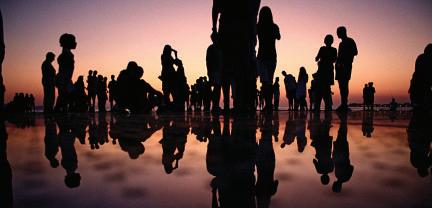
38 COLLEGIETTE |
Photo by Mario Purisic
OPINION:

THE DANGERS OF ANTIMICROBIAL RESISTANCE: ARE COLLEGE STUDENTS AWARE OF THE POTENIAL RISKS OF ANTIBIOTICS?
In 1909, Paul Ehrlich, a German physician, discovered that a chemical called arsphenamine was an effective treatment for syphilis. This became the first modern antibiotic, although the term “antibiotics” wouldn’t be coined for another 30 years.
Antibiotics are used to treat only bacterial infections and work by targeting specific components or processes within bacterial cells, disrupting their normal function and ultimately killing or inhibiting the growth of the bacteria. They become dangerous when overprescribed or misused.
This leads to antimicrobial resistance (AMR) where bacteria, viruses, fungi, or parasites develop the ability to resist the effects of antimicrobial drugs. Today, antibiotics are a common fix for most bacterial infections and seem safe and effective.
However, the Center for Disease Control (CDC) estimates that at least 28% of antibiotics prescribed in the outpatient setting are unnecessary.
AMR also develops when individuals do not complete their prescribed course of antibiotics. If they become sick again, the remaining bacteria may become resistant to the antibiotic that they’ve taken.
AMR can spread in healthcare settings, communities, water, soil, food supply and during travel. However, it is most commonly found in healthcare settings such as hospitals and nursing homes.
Educating communities on antimicrobial resistance is a significant global health threat. AMR can render previously effective treatments ineffective, leading to prolonged illness, increased mortality and higher healthcare costs.
Addressing antimicrobial resistance requires a multifaceted approach, including the responsible use of antibiotics, improved infection prevention and control measures and the development of new antimicrobial drugs and therapies.
39 COLLEGIETTE |
Hannah Arthur
Illustrations by Emberly Quiroz
Photo by Loic Furhoff
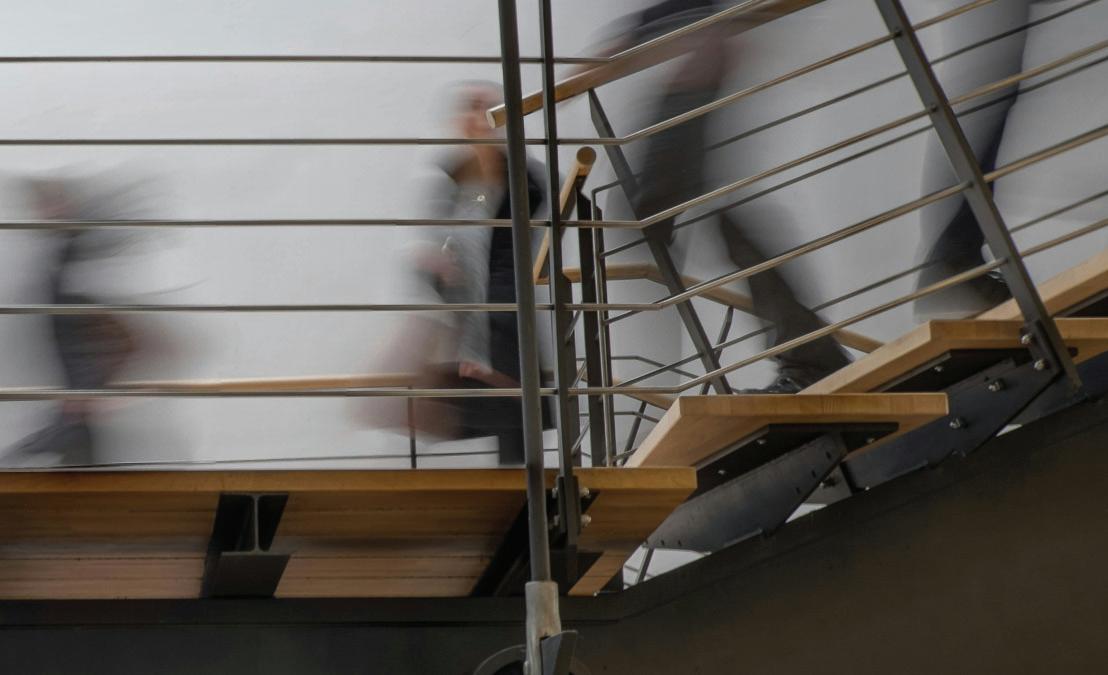
Many are aware of AMR, but have difficulty grasping its severity.
“I feel like antibiotics are usually considered a low-level medication and are pretty easy to be prescribed when you feel sick or have any type of general illness like a sinus infection,” said Ashley Smith, an American University CLEG student in the class of 2024.
While this may be true, the danger of overprescribing and overusing antibiotics could have fatal results for individuals and the healthcare system as a whole.
“I take a few gummy probiotics because I know antibiotics can get rid of some healthy gut bacteria,” said Olivia Gargiulo, a health studies major. Research has shown that probiotics help restore a healthy gut microbiome.
“I think some students would rather explore natural remedies to avoid developing any resistance. I feel like doctors can often be cautious too, I’ve met some doctors that don’t prescribe me antibiotics and some that will,” Gargiulo said.
Gargiulo notes an important struggle commonly found between patients and doctors. While antibiotics are usually
an easy fix to cure an infection, doctors have recently grown weary due to the fear of growing resistance.
To preserve the progress made in the medical field, we must educate doctors on when to prescribe antibiotics and the general public on the importance of finishing an antibiotic course and taking probiotics to preserve gut health. The importance of being aware and educated on AMR will give us the ability to treat infections and bacteria, or else we will diminish our ability to cure public health threats.

40 COLLEGIETTE |
Photo by Volodymyr Hryshchenko
OUR TEAM
Executive Board:
Sana Mamtaney Editor-in-Chief
Jordyn Habib President
Hannah Arthur Business Director
Belle Evans Events Director
Lori Rampani Social Media Director
Hannah Newlon-Trujillo Publishing Director
Sophie Carter Design Director
Kaitlyn Such Multimedia Editor
Maryjane Williams Managing Editor
Ela Hernández & Karlee Zolman Section Editors
Katie Aronson & Isabella Smith Social Media Editors

Sarah Metcalfe Multimedia Director @hercampusau


41 COLLEGIETTE |
fia
@hercampusau @hercampusAU hercampus.com/school/american/ So
Marcus Print Editor
Print Team:
Sana Mamtaney
Editor-in-Chief
Hannah NewlonTrujillo Publishing Director
Sofia Marcus Print Editor
Sophie Carter Design Director
Design Team:
Sophie Carter Design Director
Sophie Carter Illustration Manager
Gracie Flach, Alyssa Guevara, and Emberly Quiroz Illustrations
Cover design by Sophie Carter
This magazine was designed by Sophie Carter and the Collegiette Design Team. The text of Collegiette is set in Monserret and EB Garamond. Collegiette is printed by Heritage Printing & Graphics, Waldorf, Maryland.
42 COLLEGIETTE |
43 COLLEGIETTE |








































































































